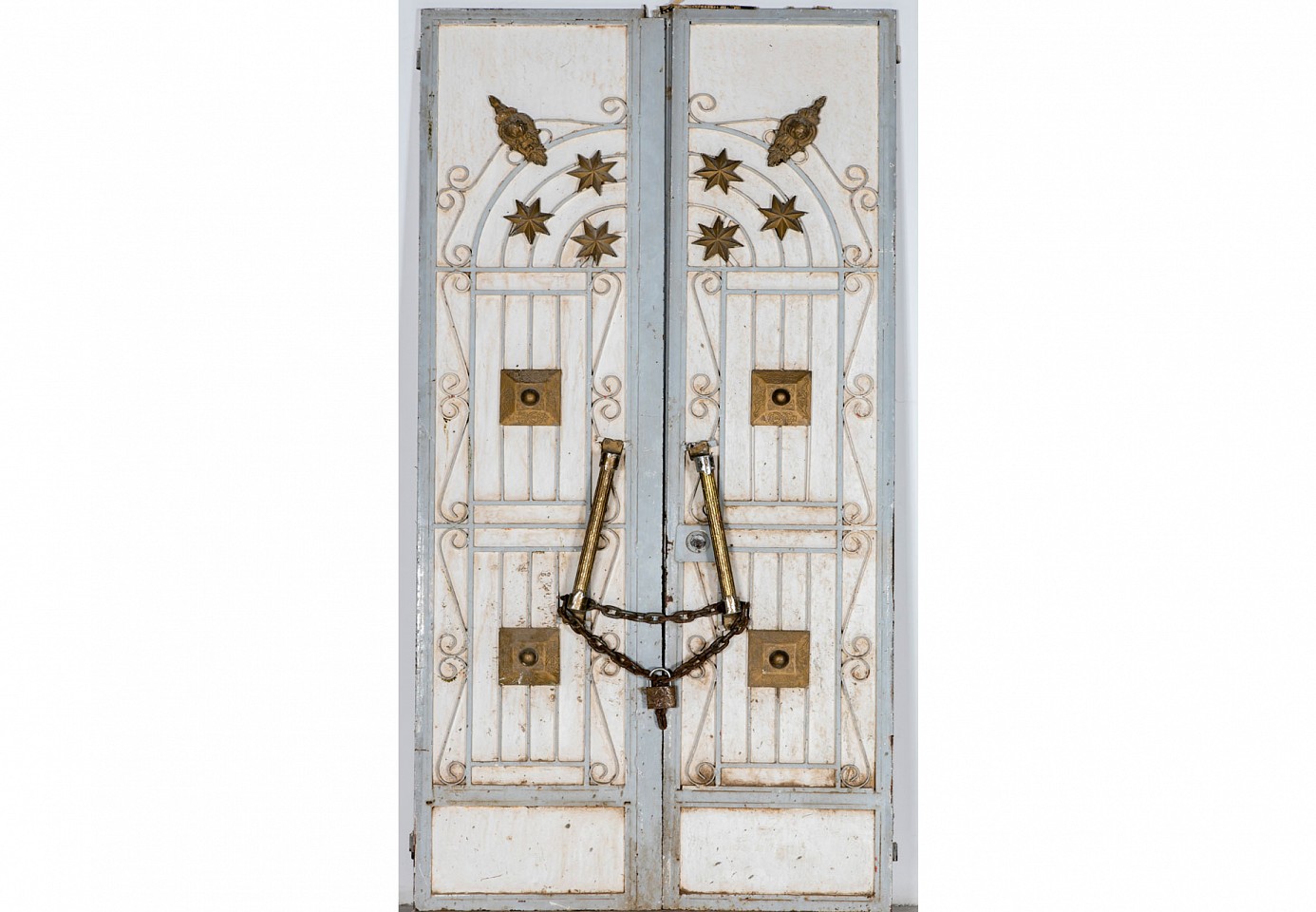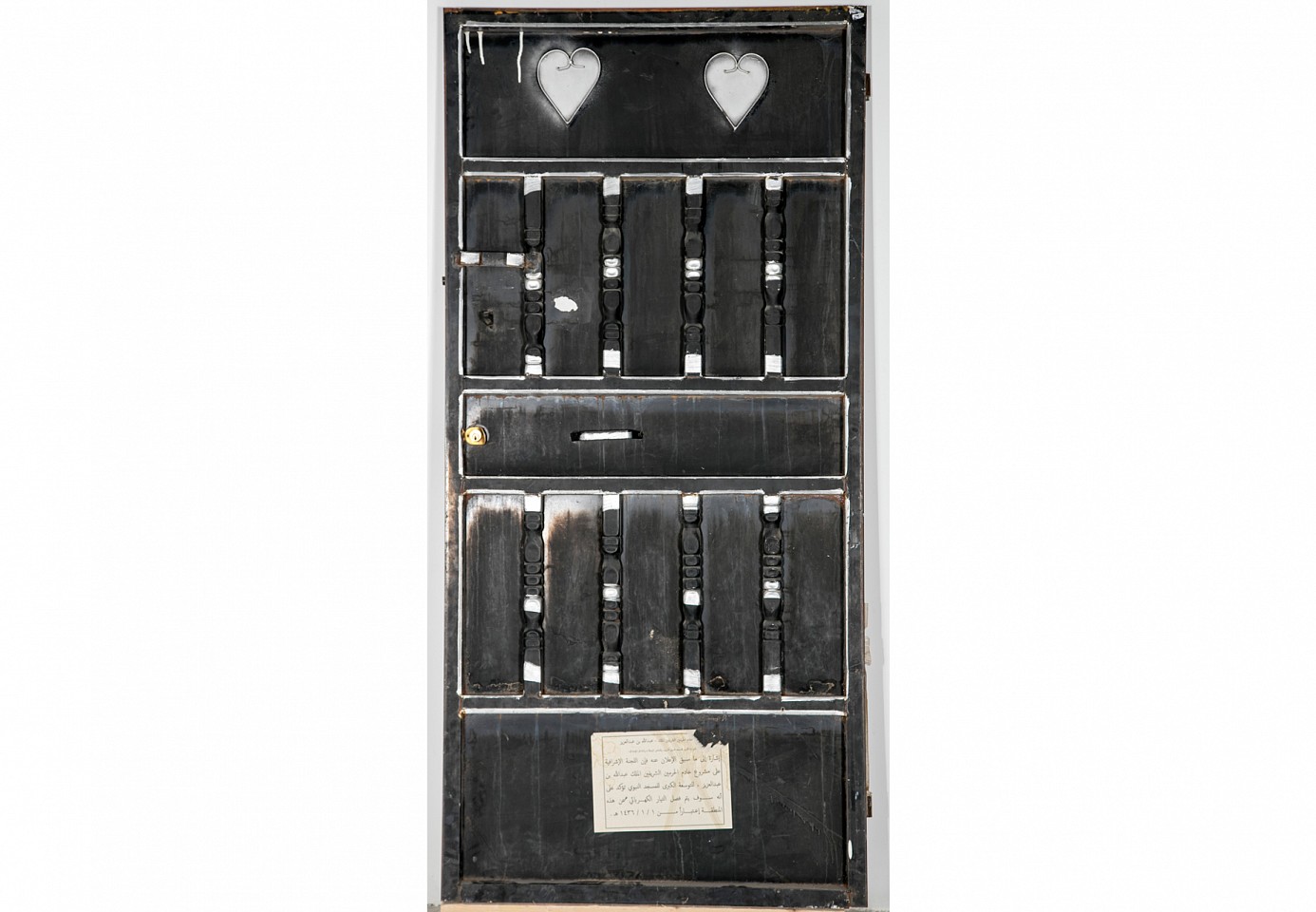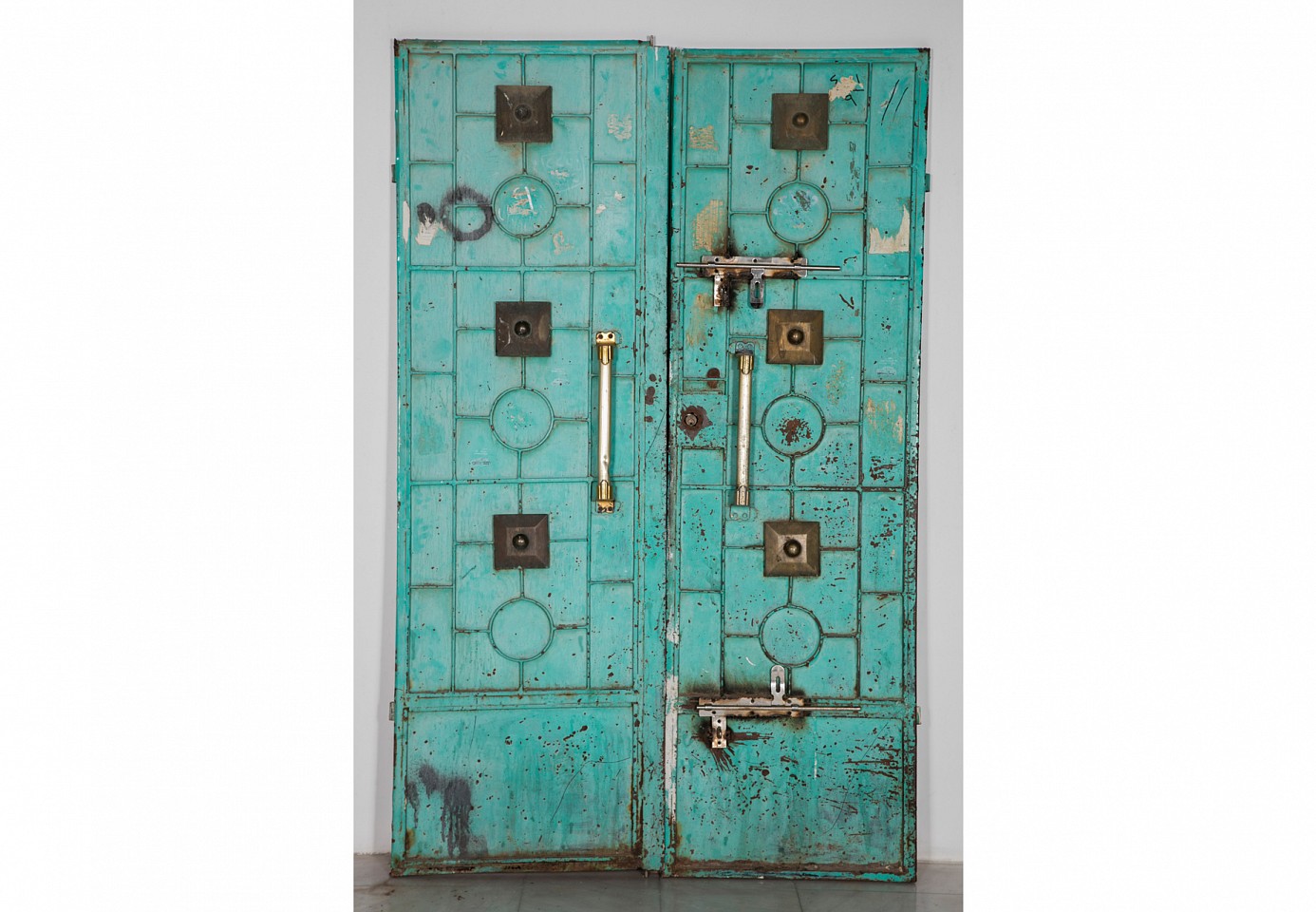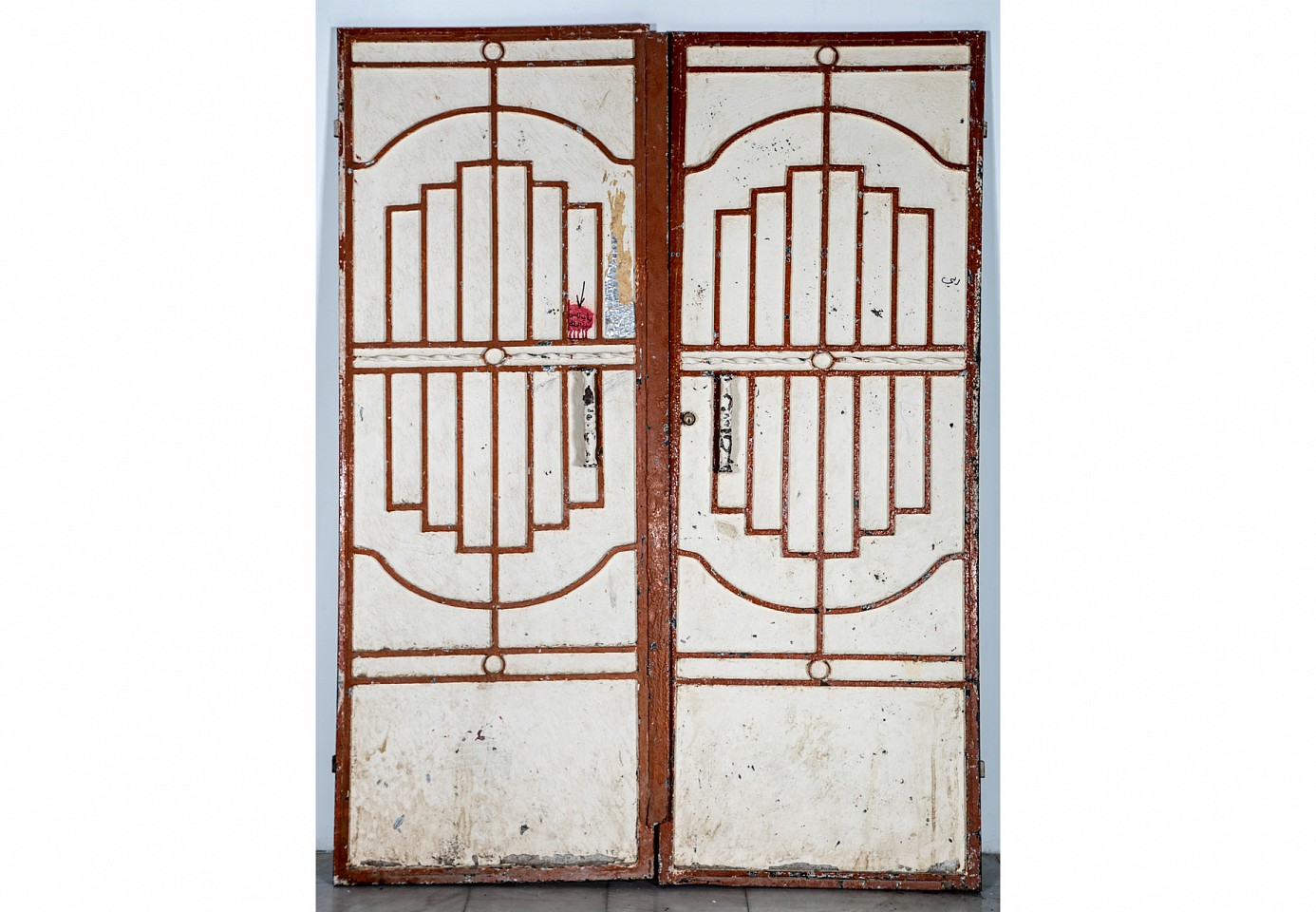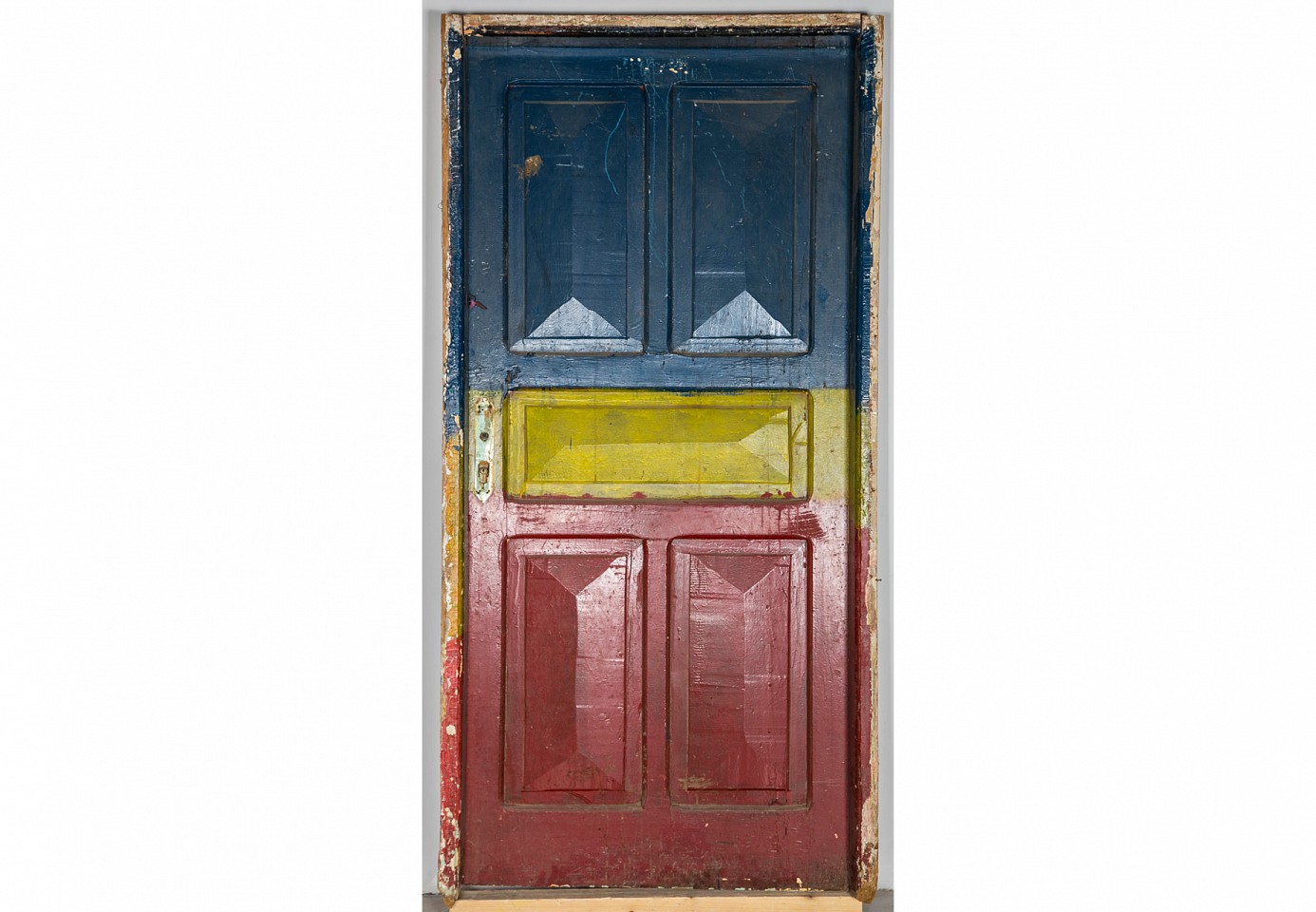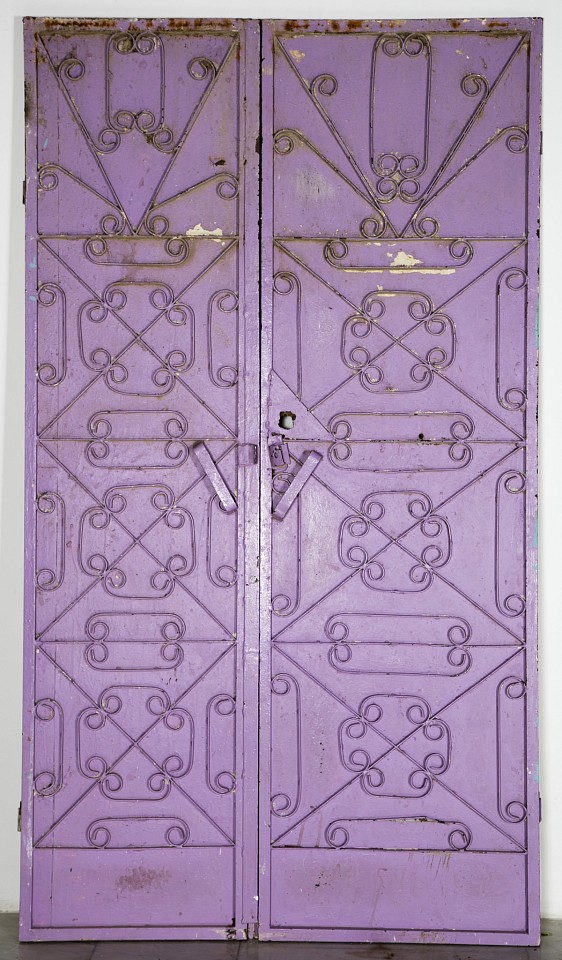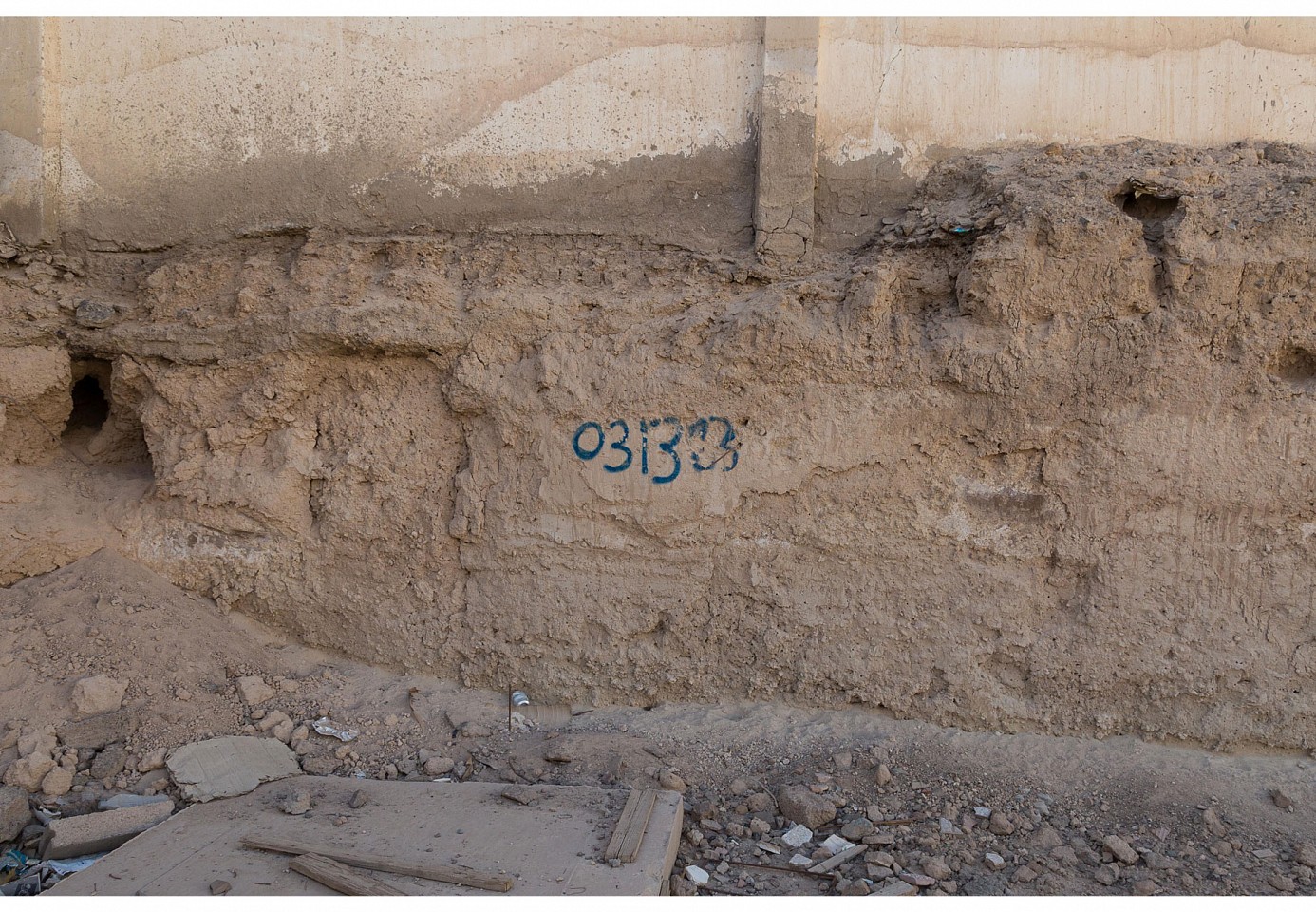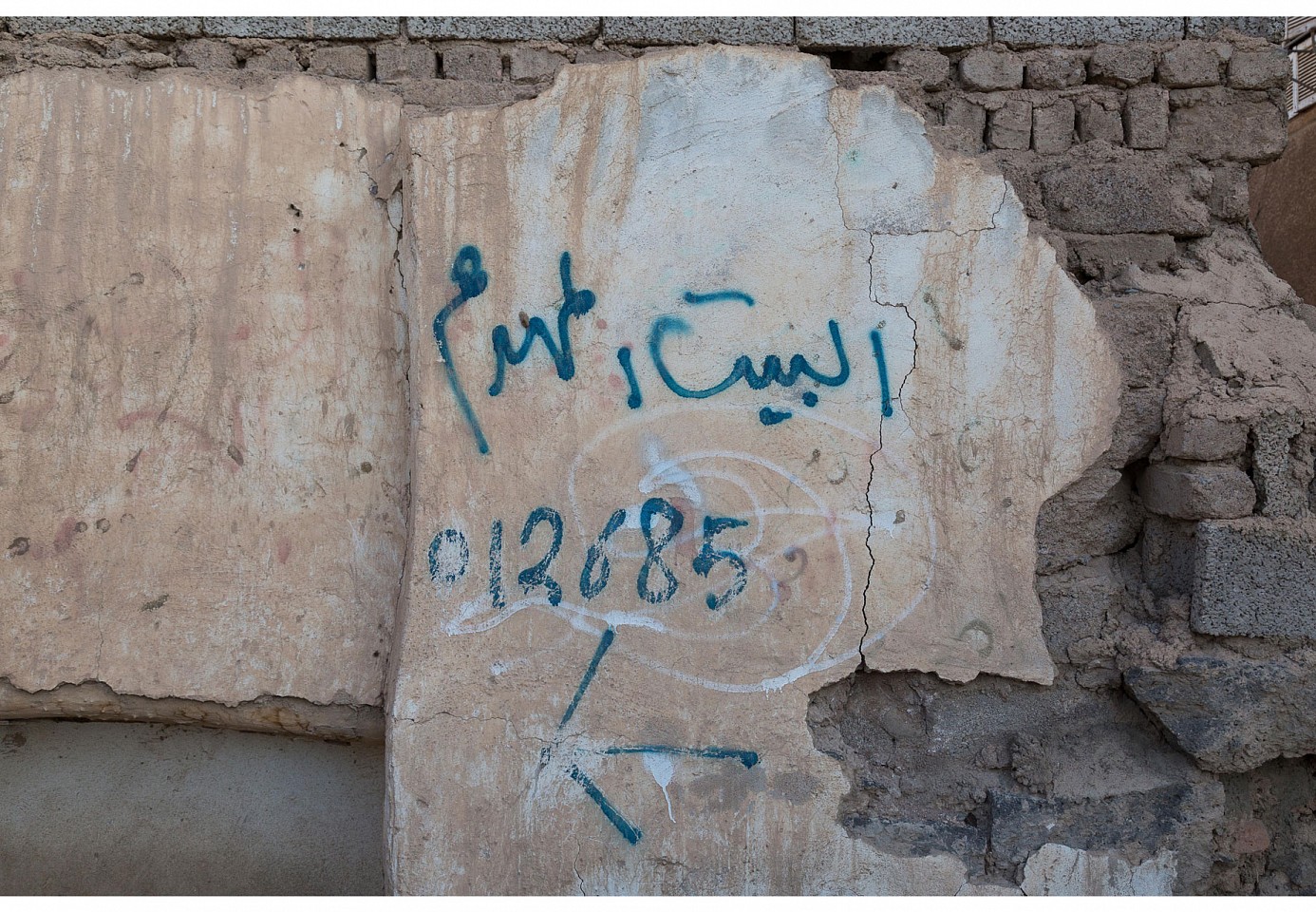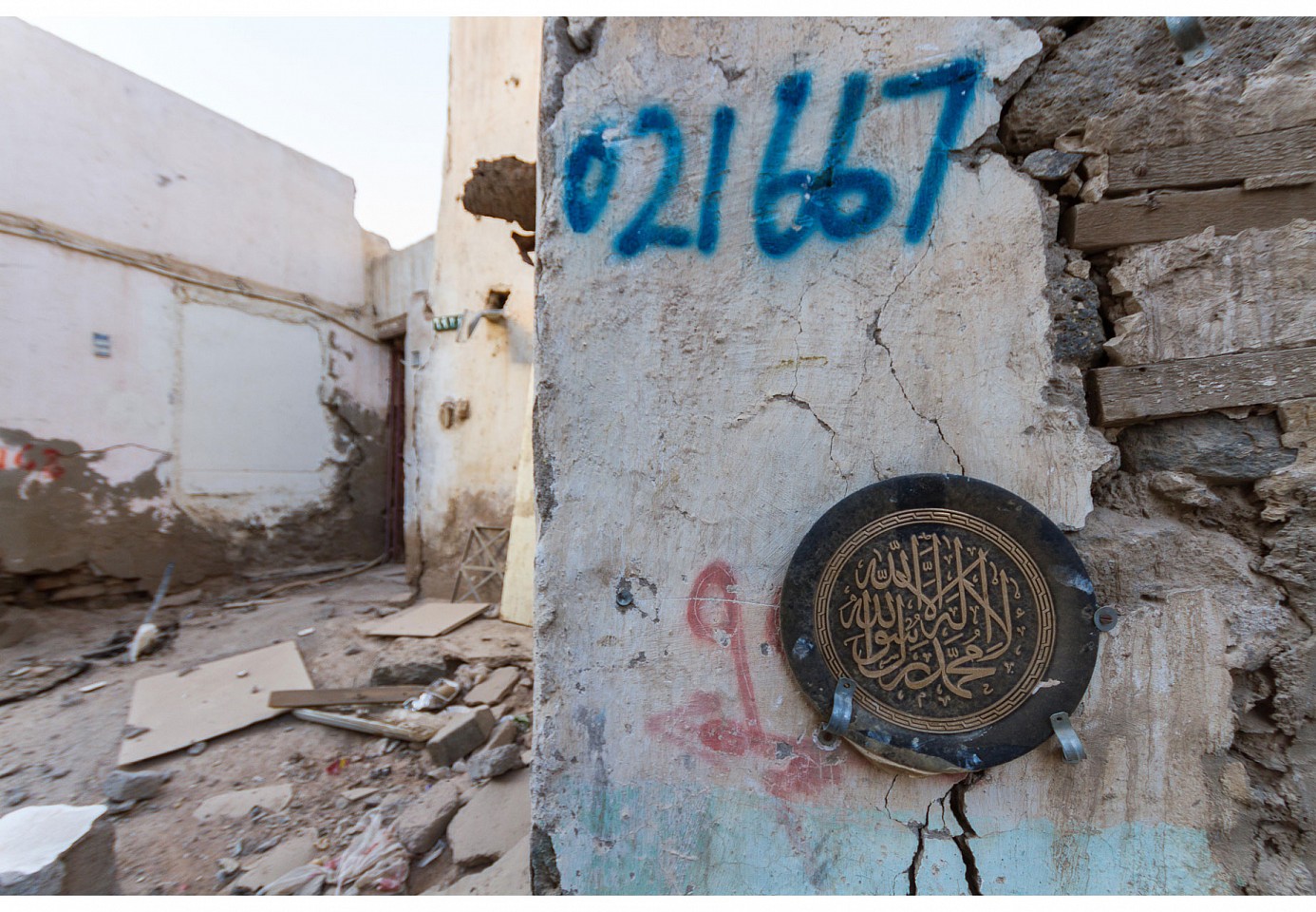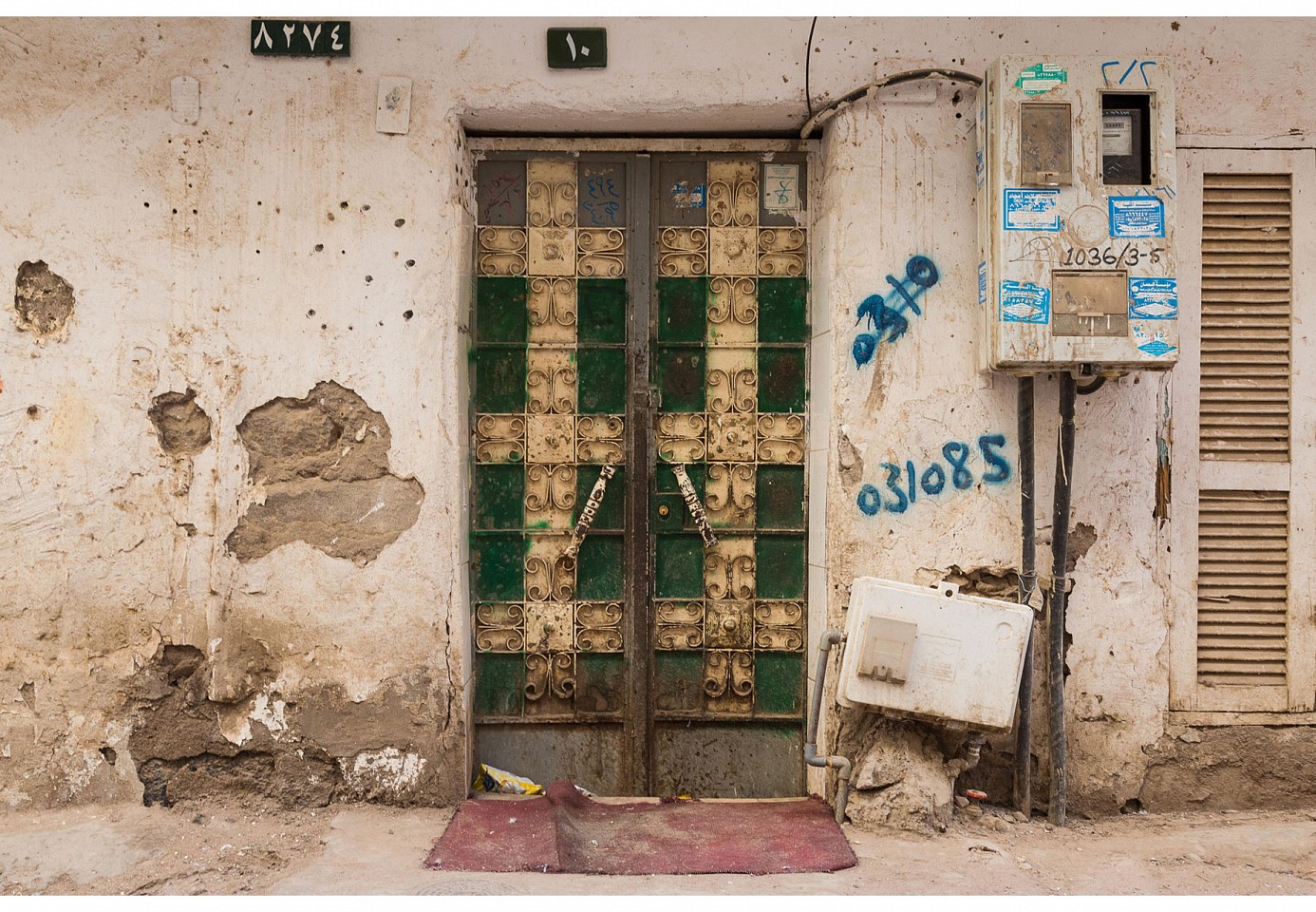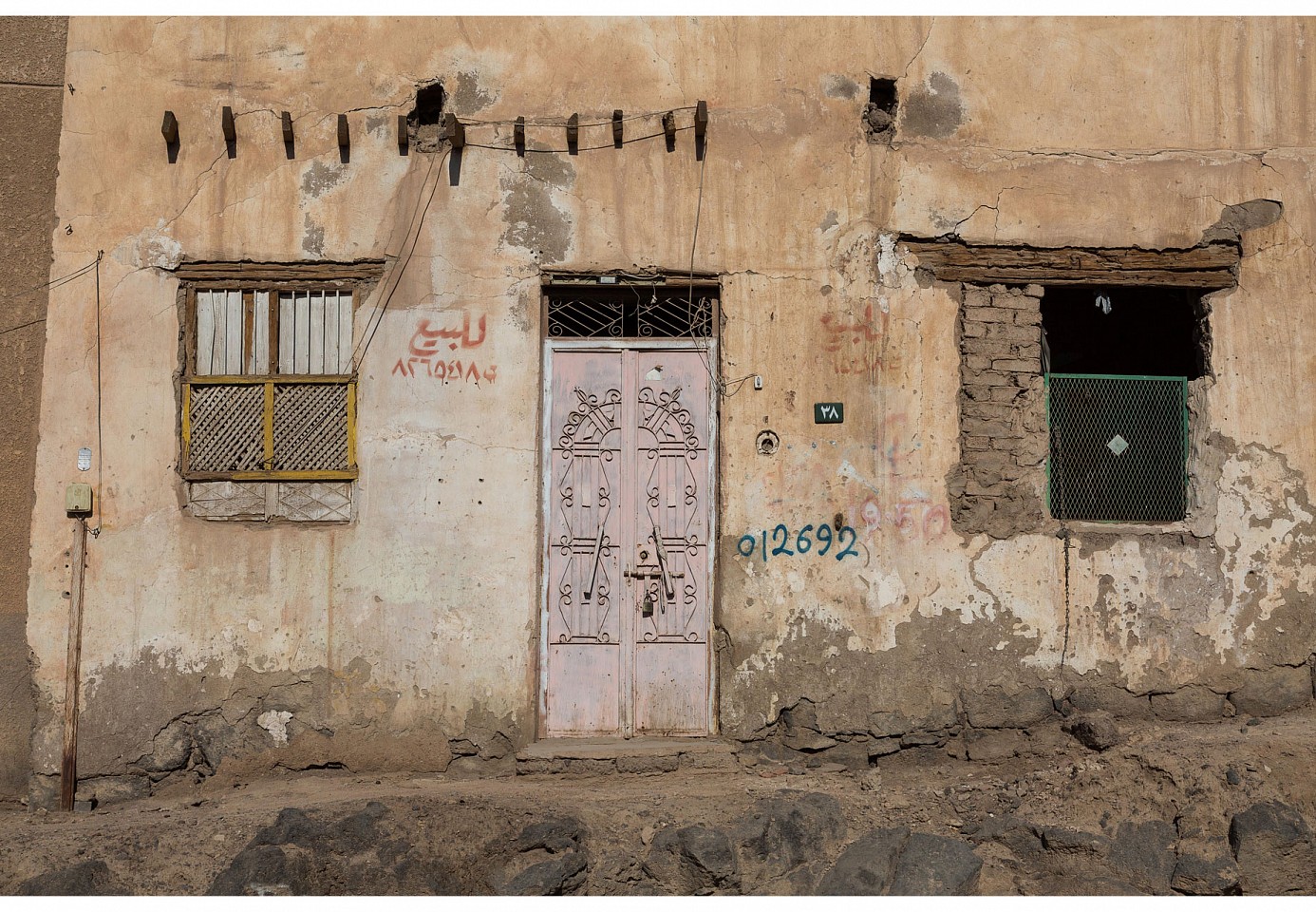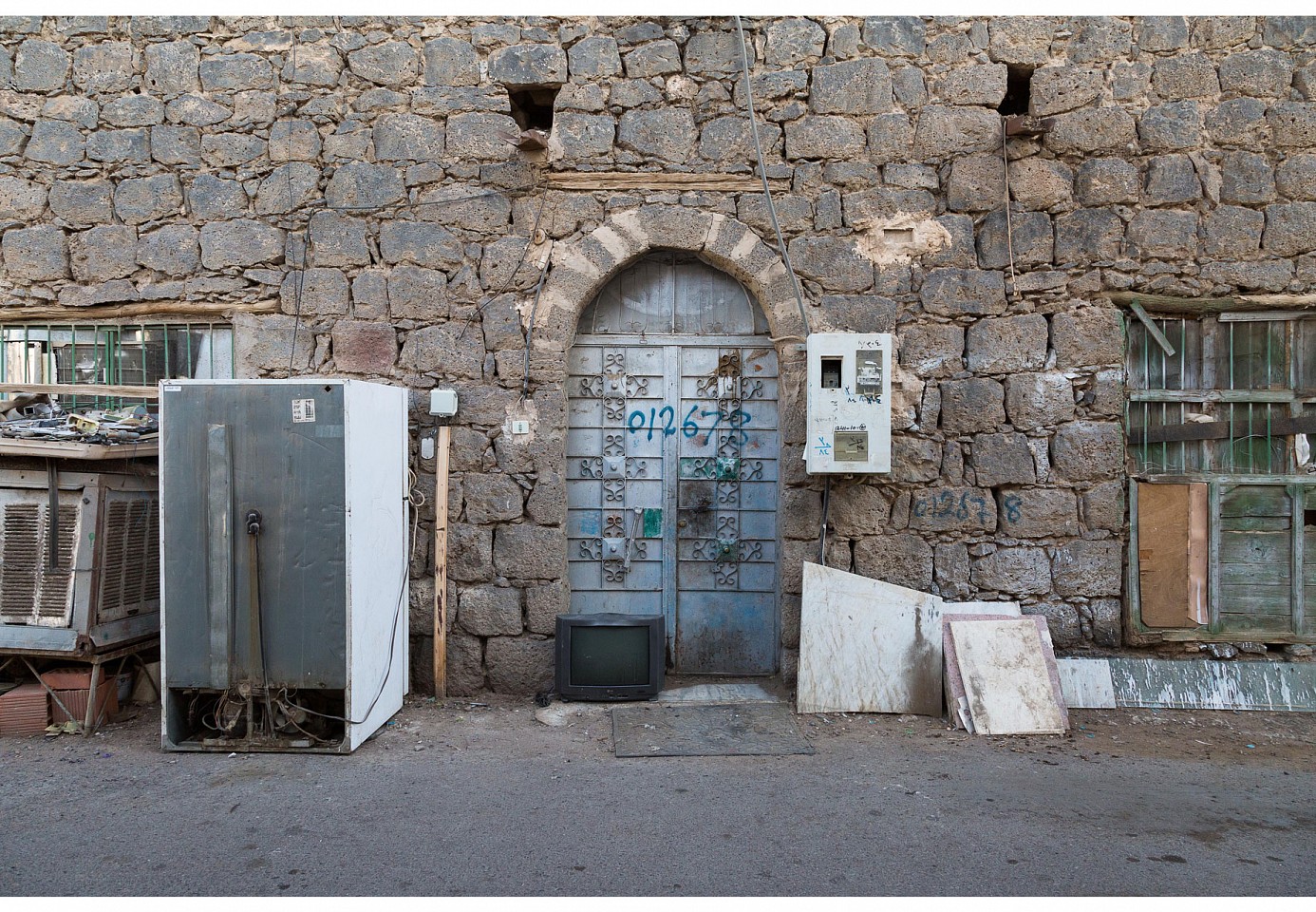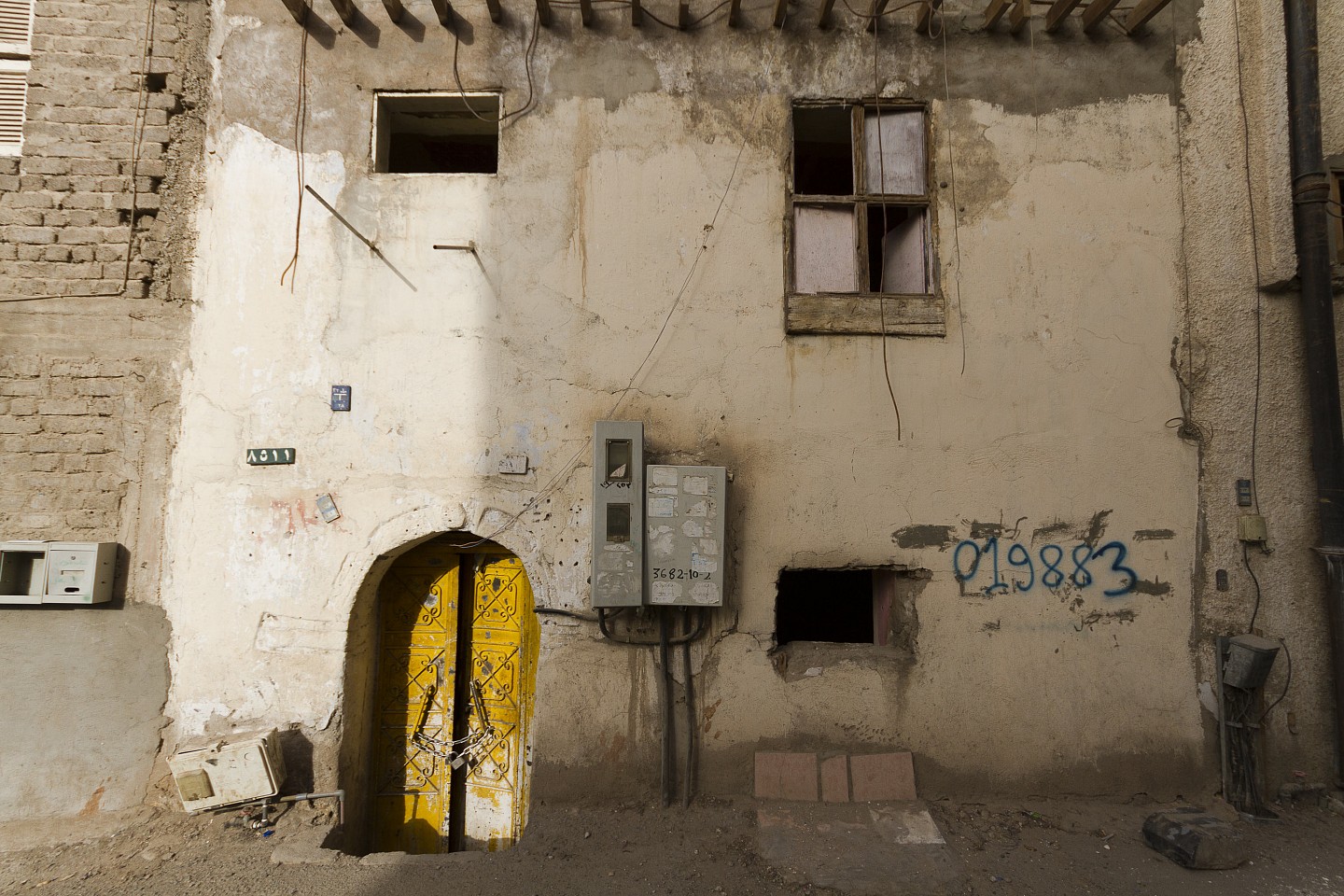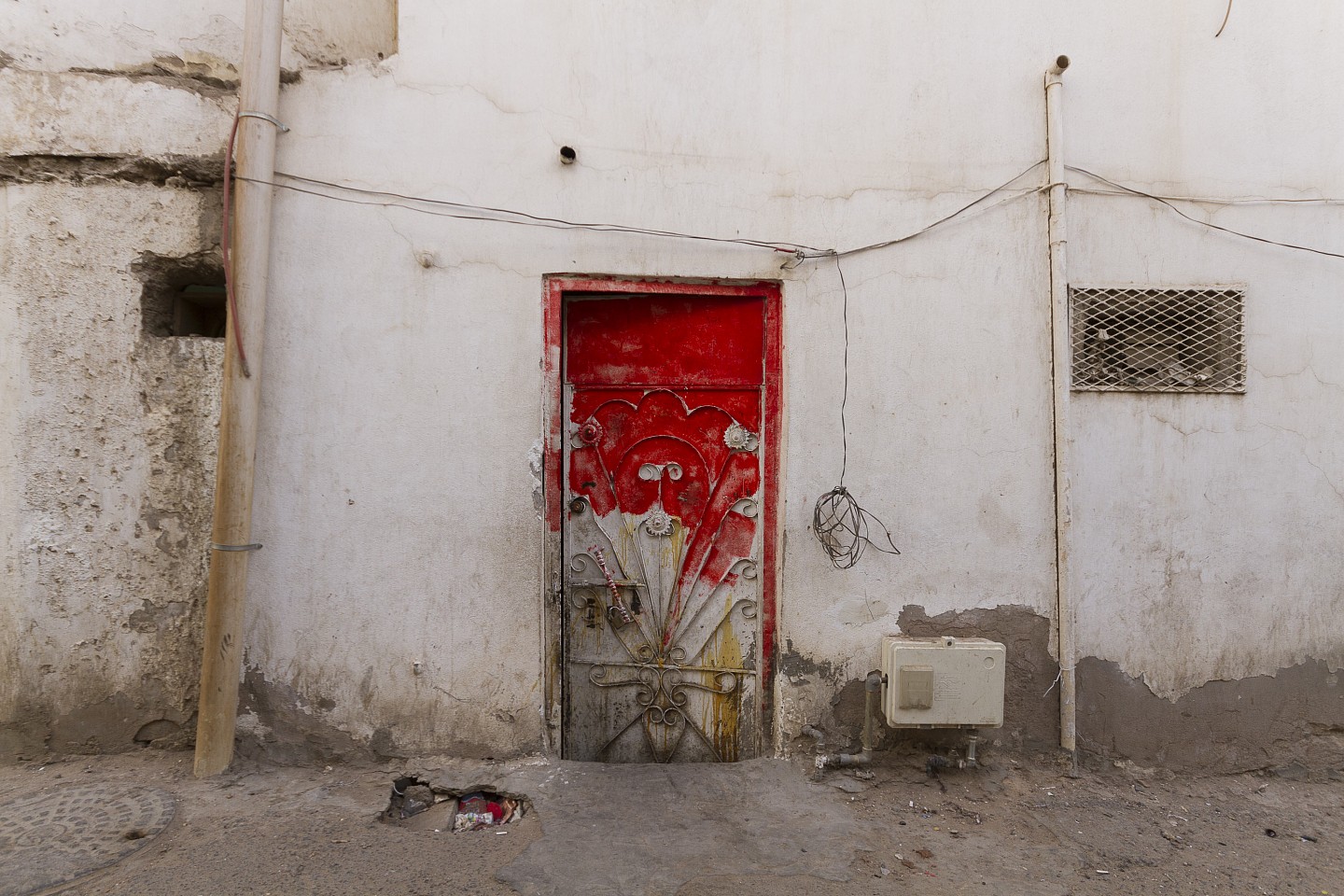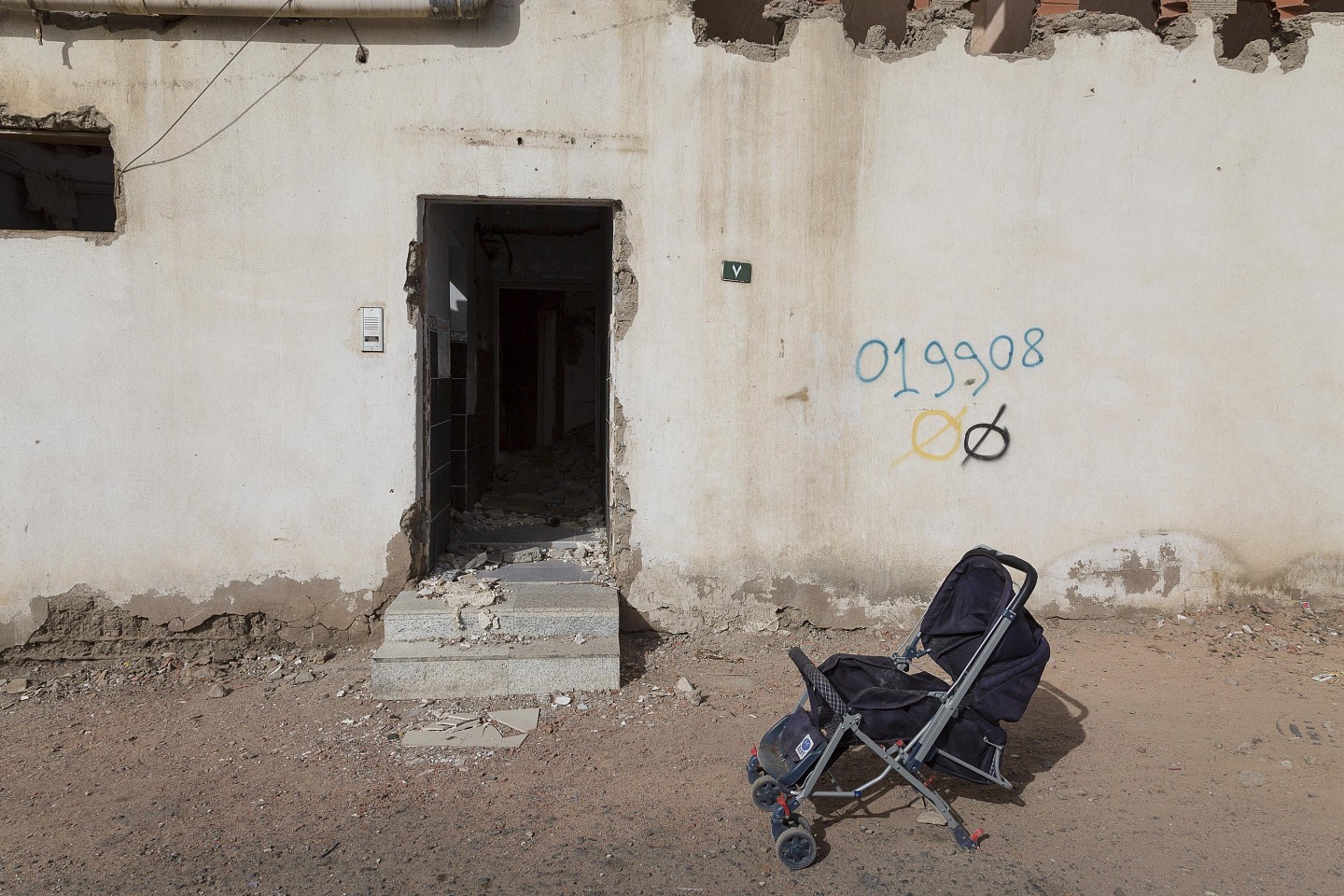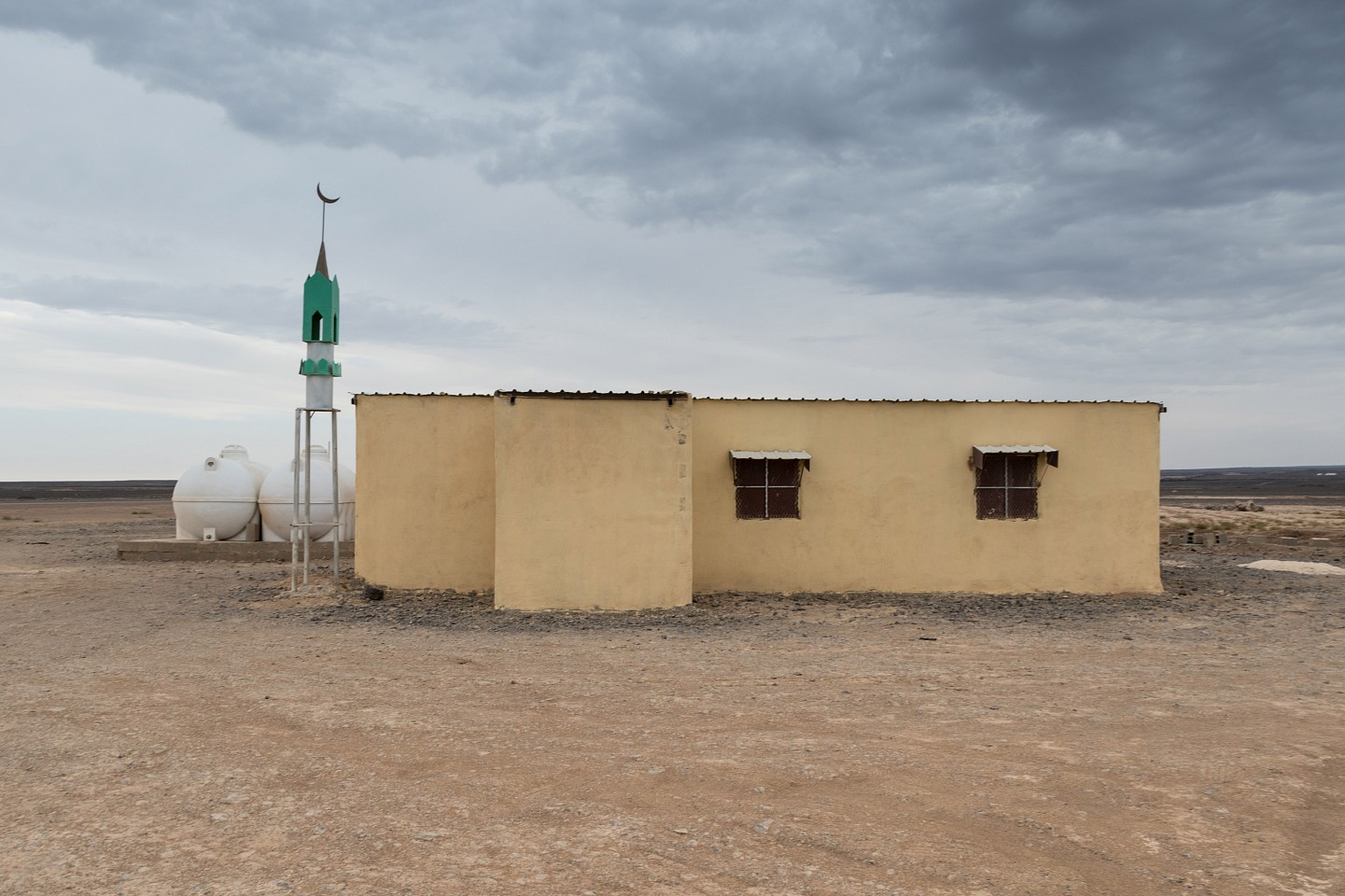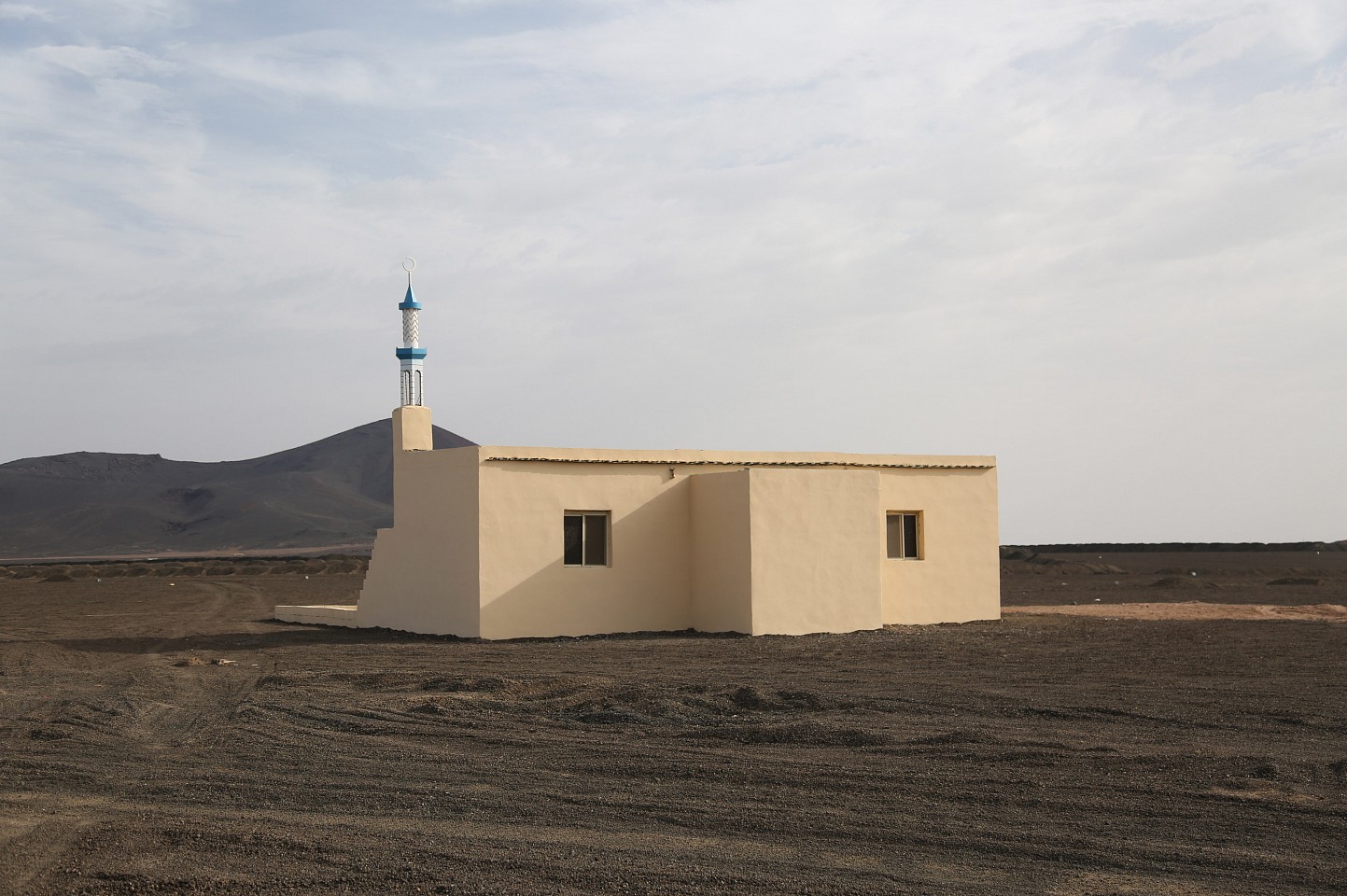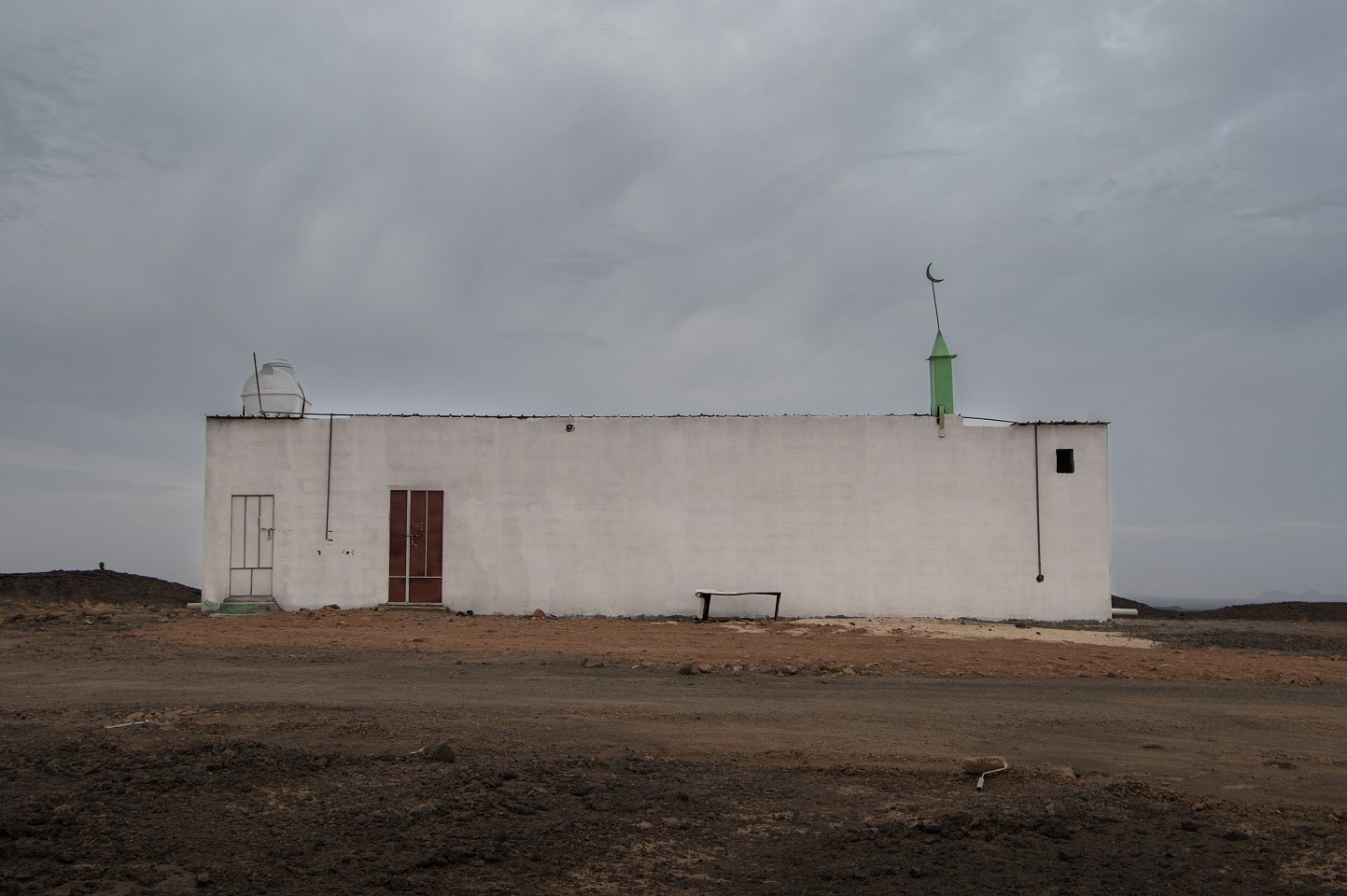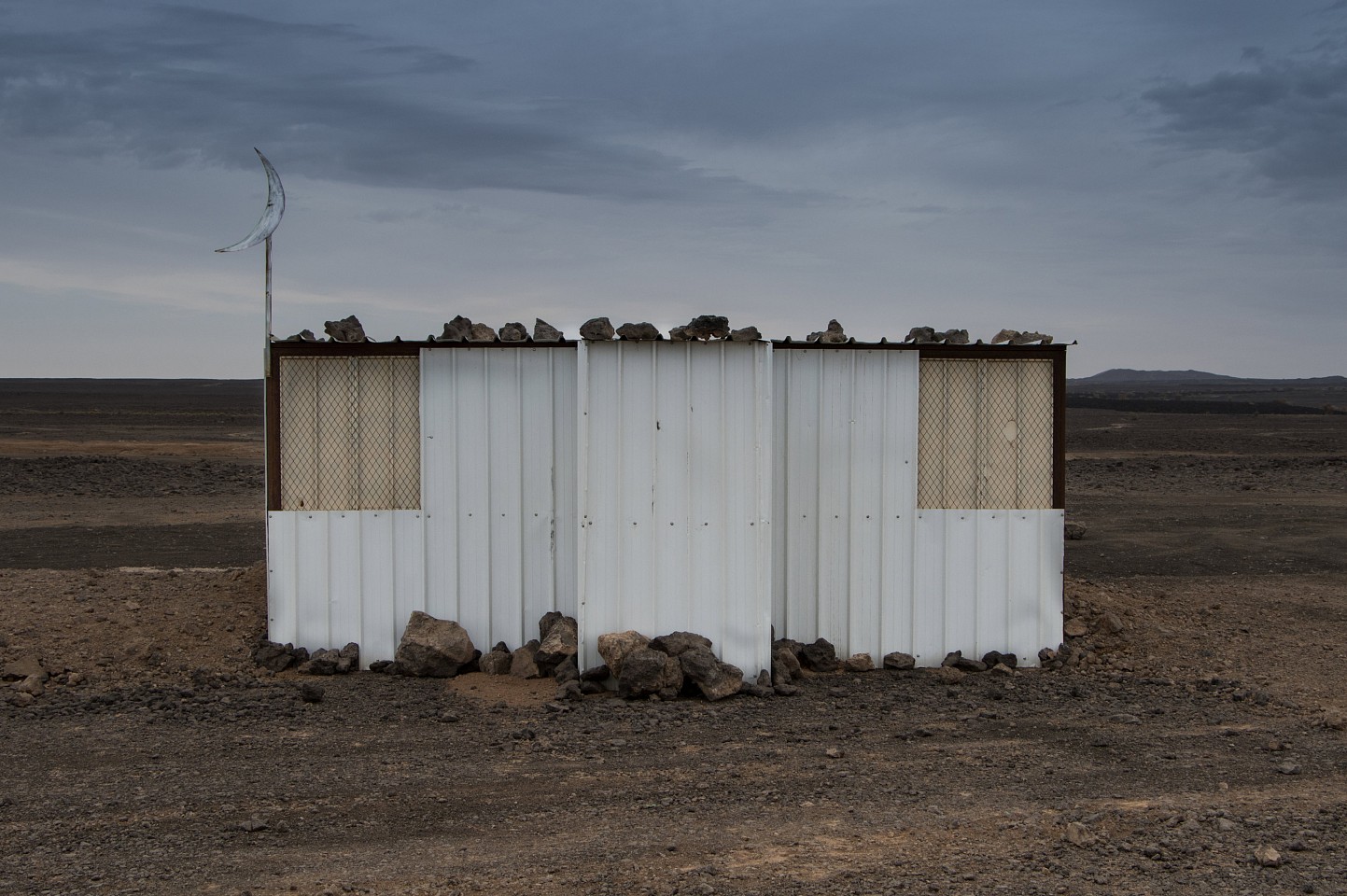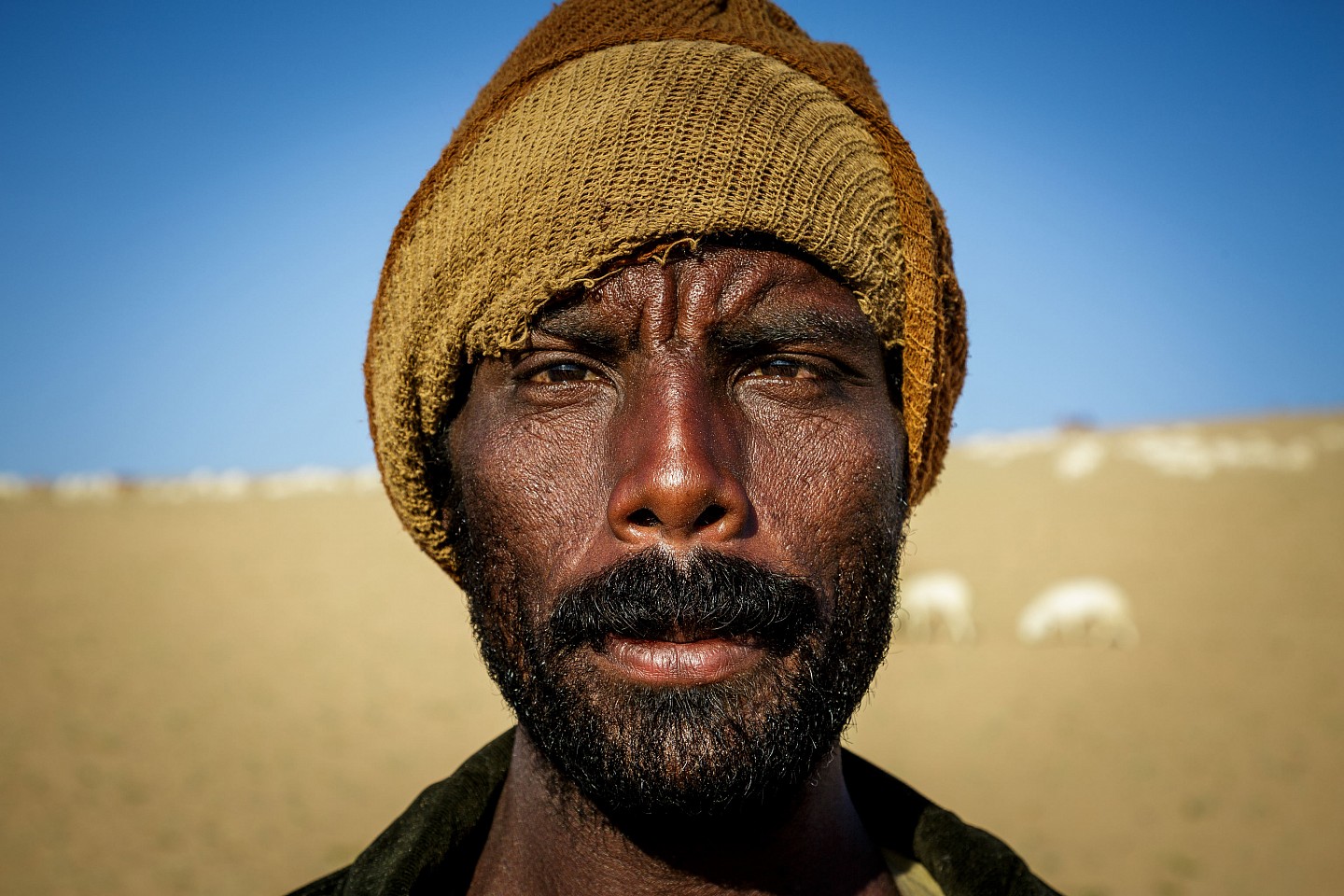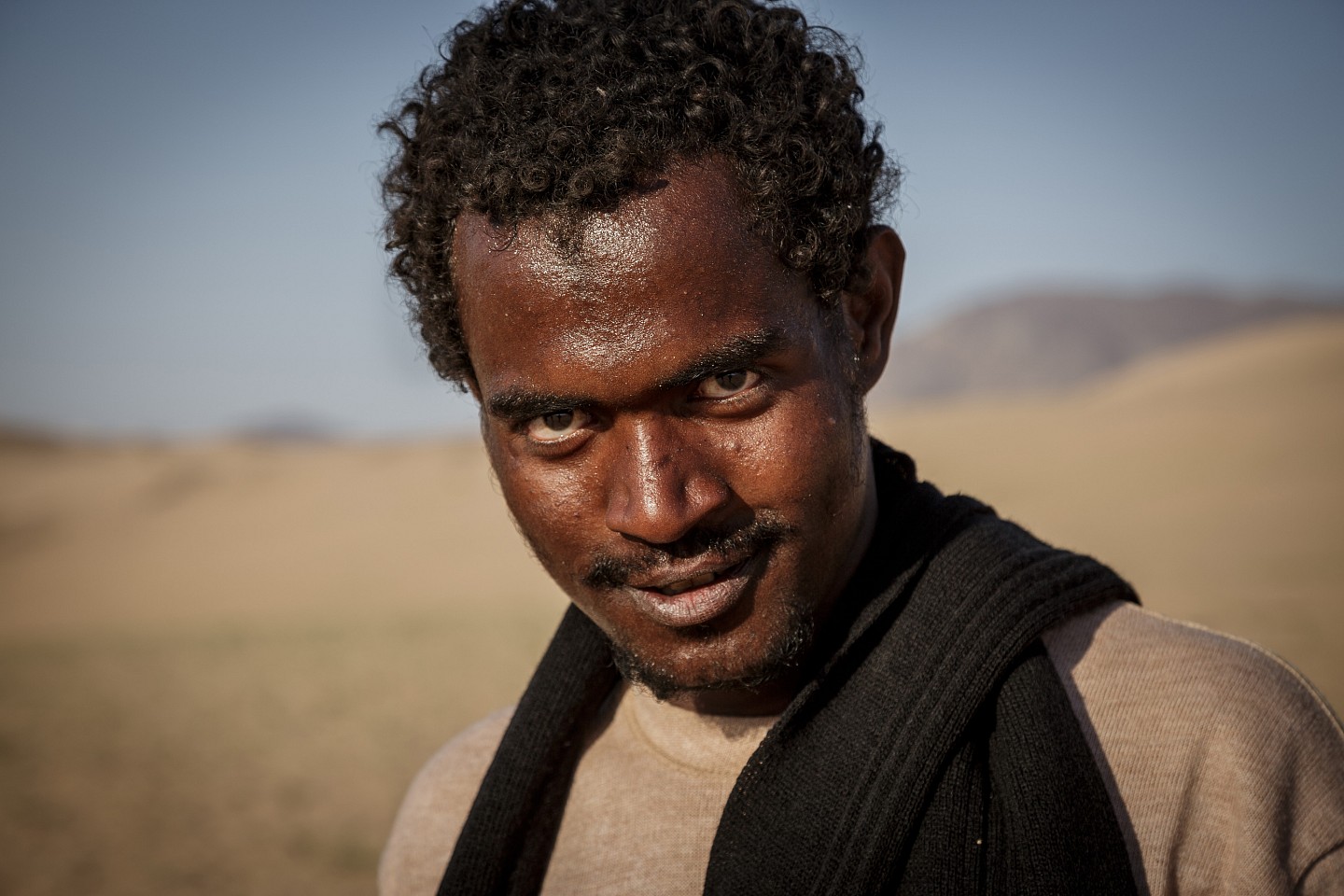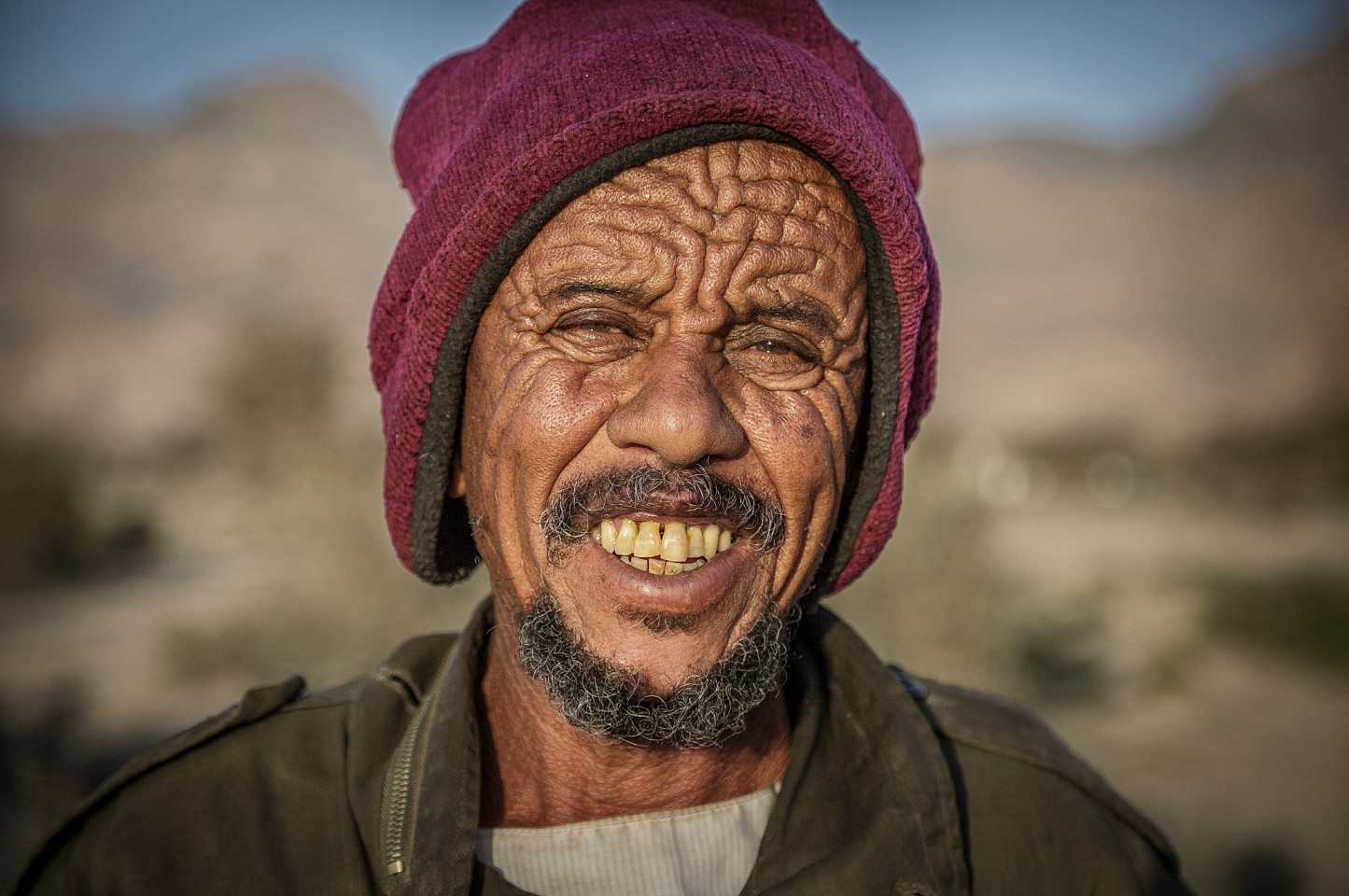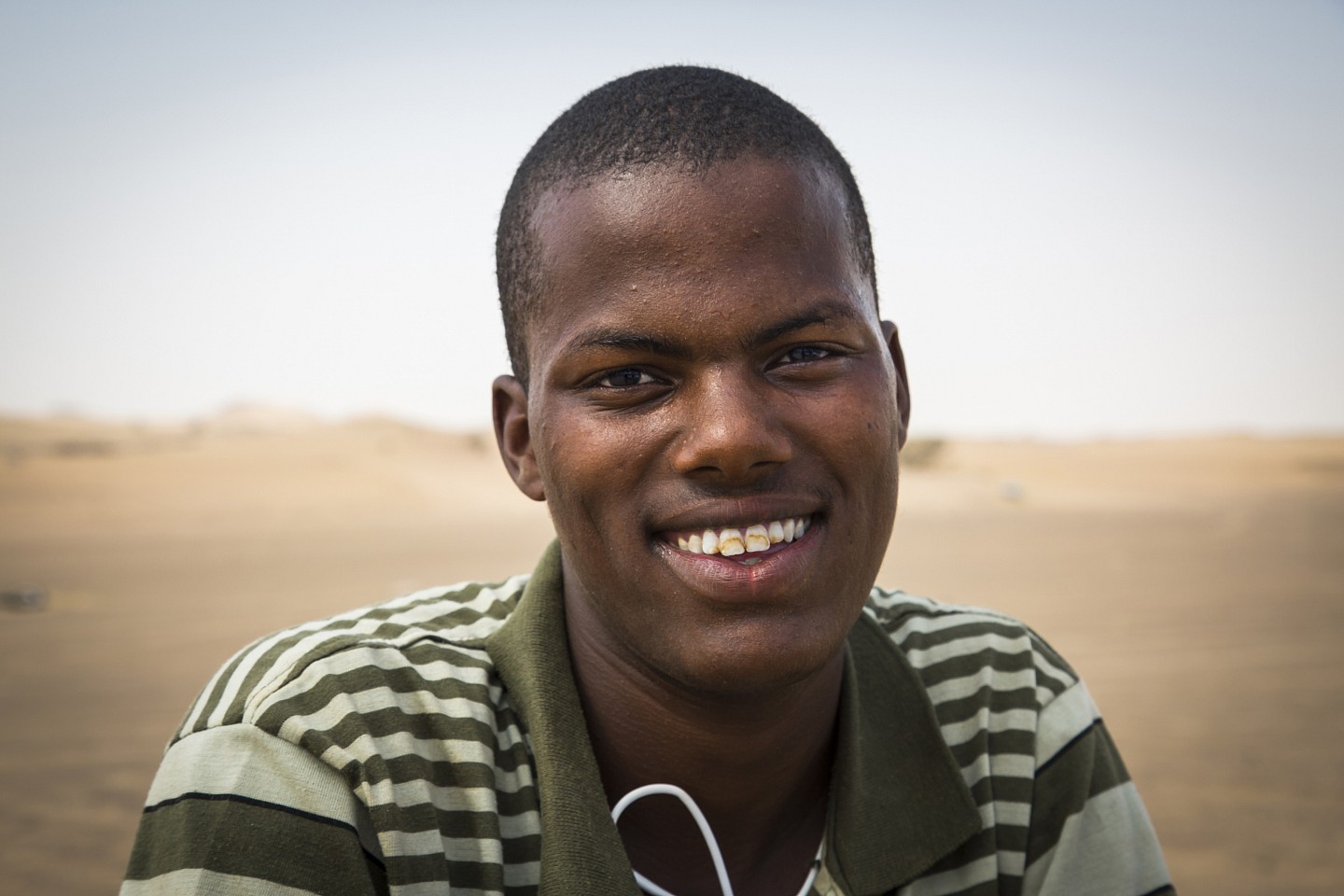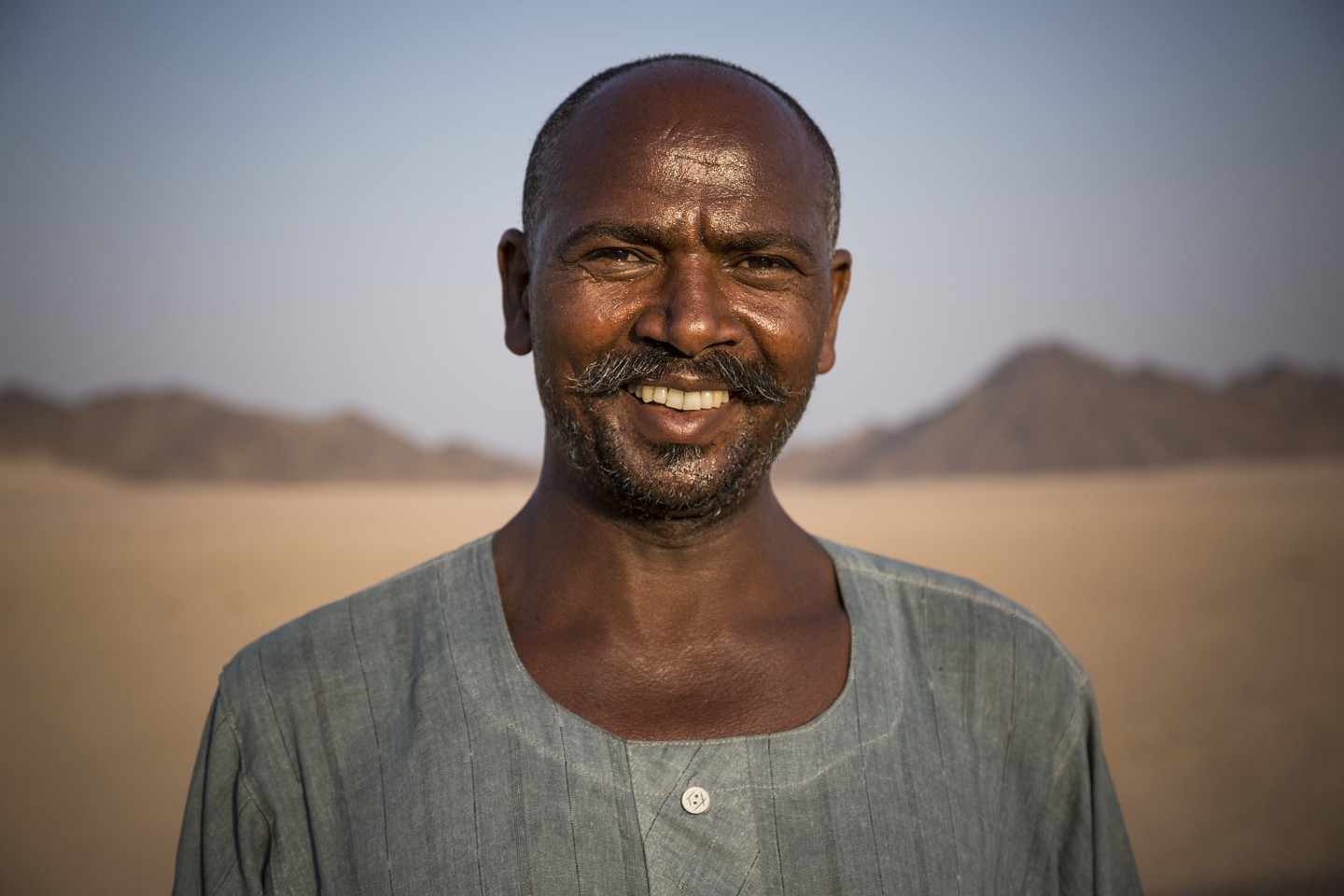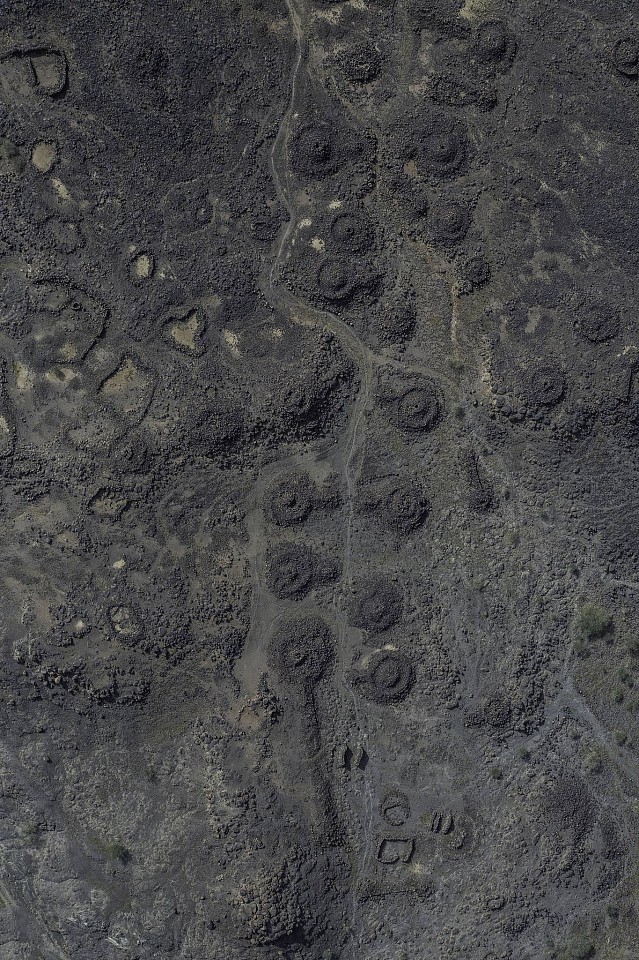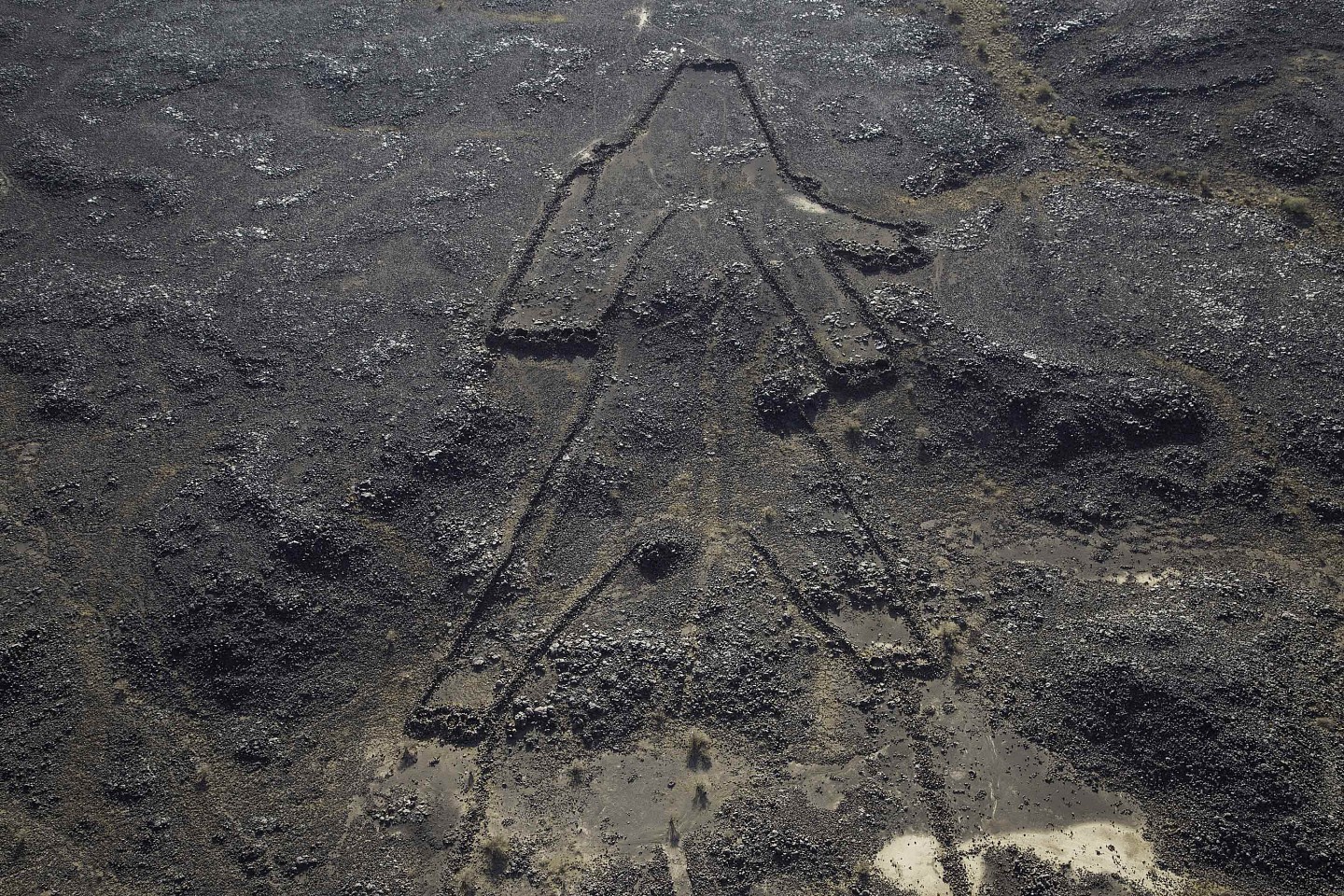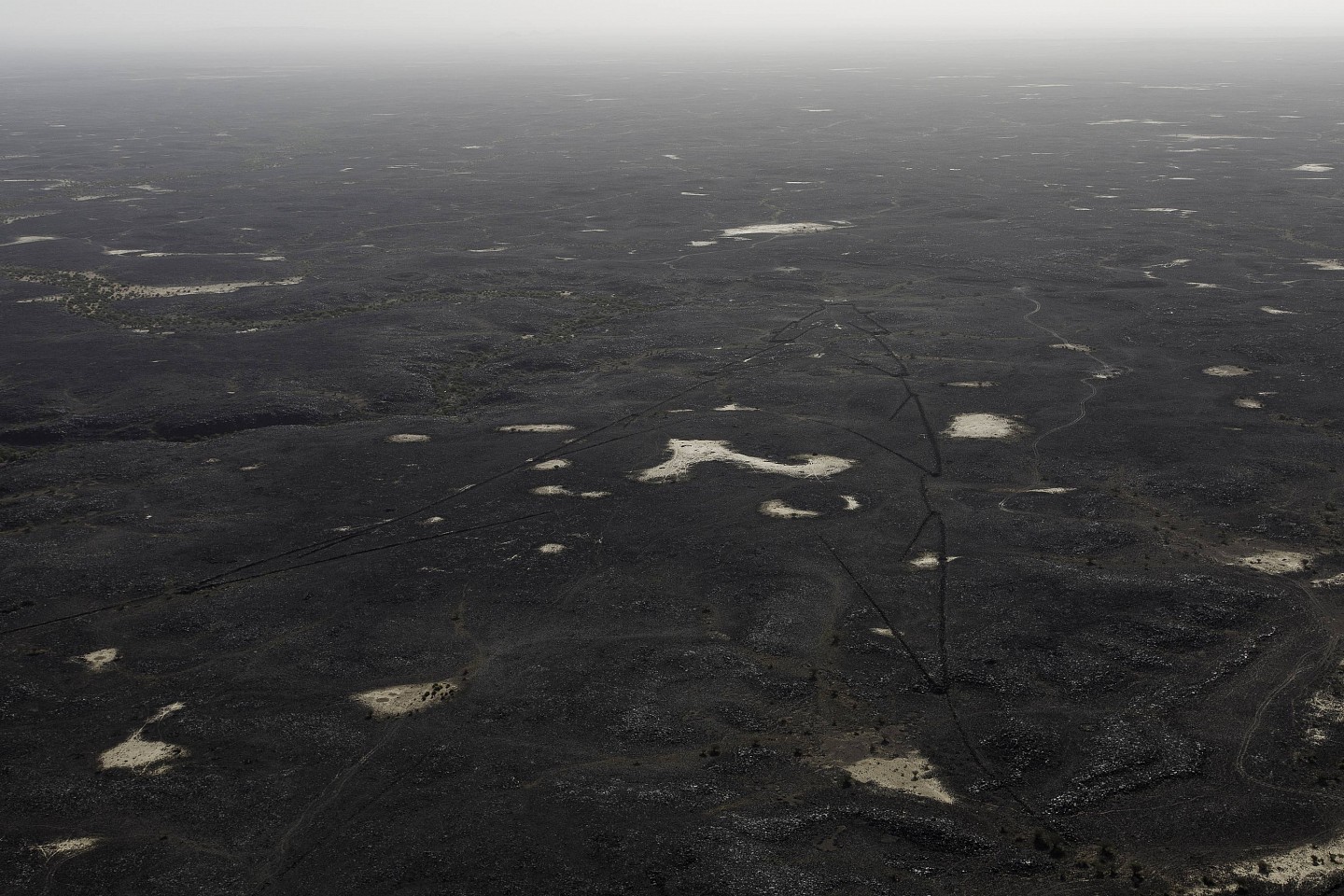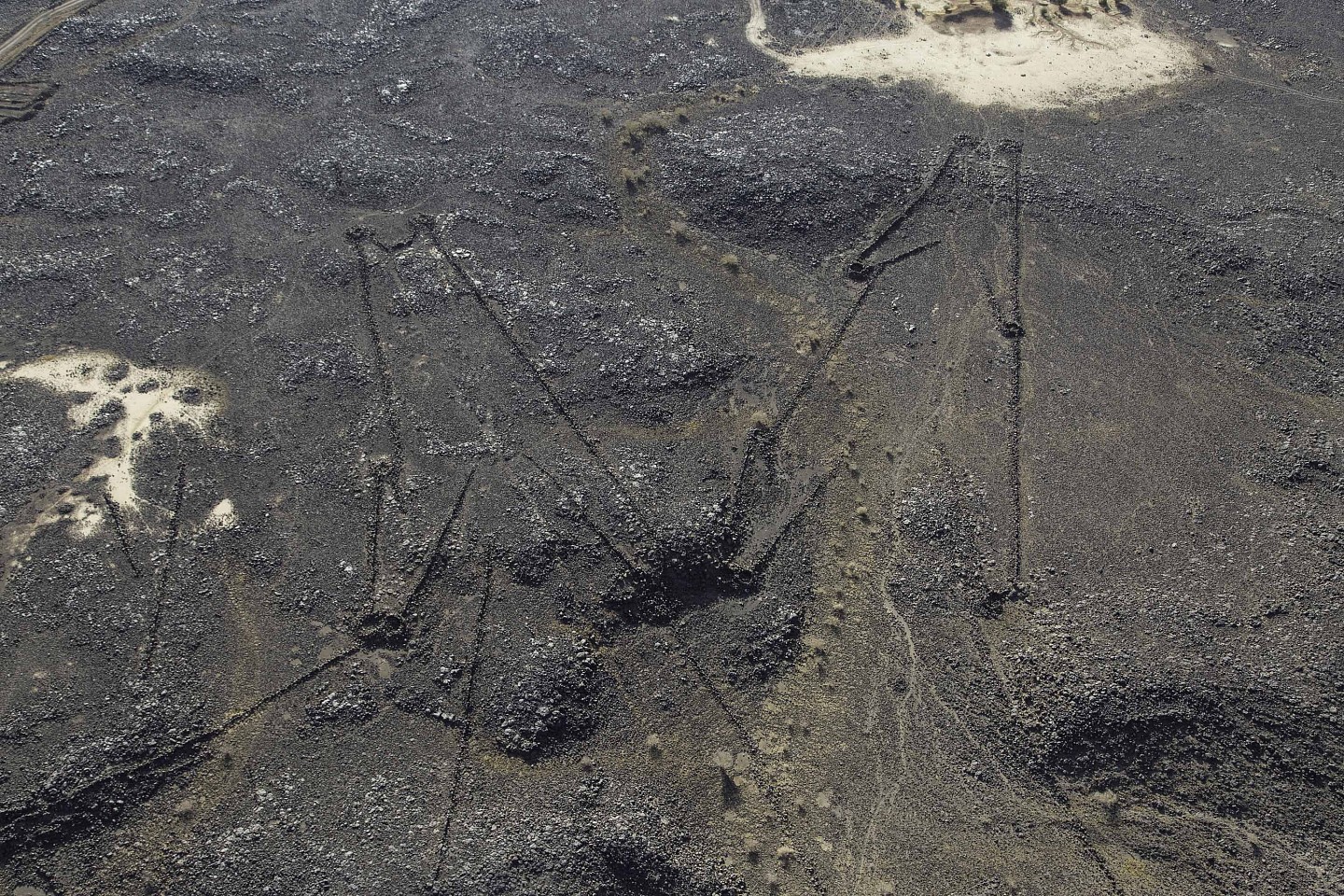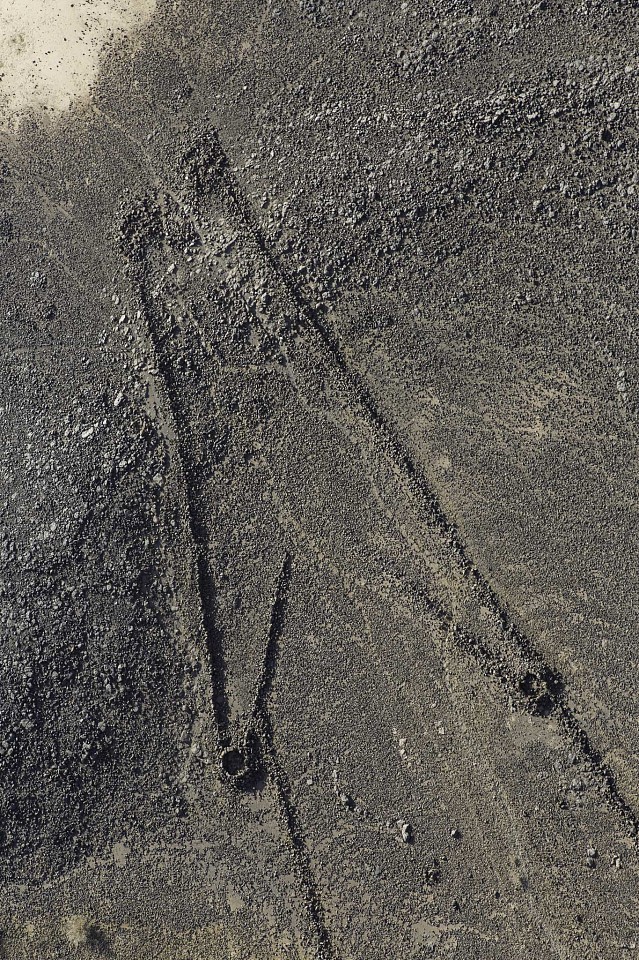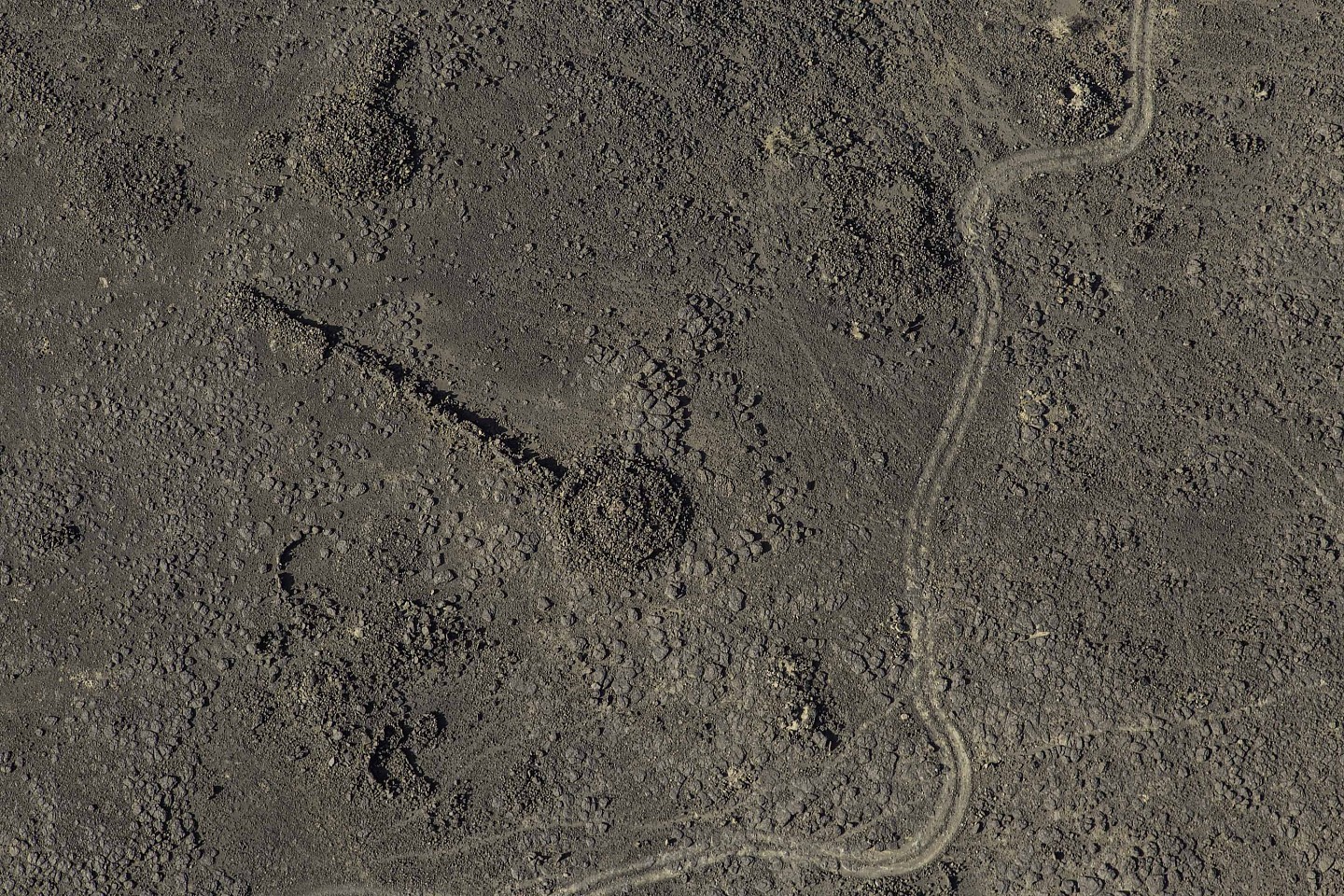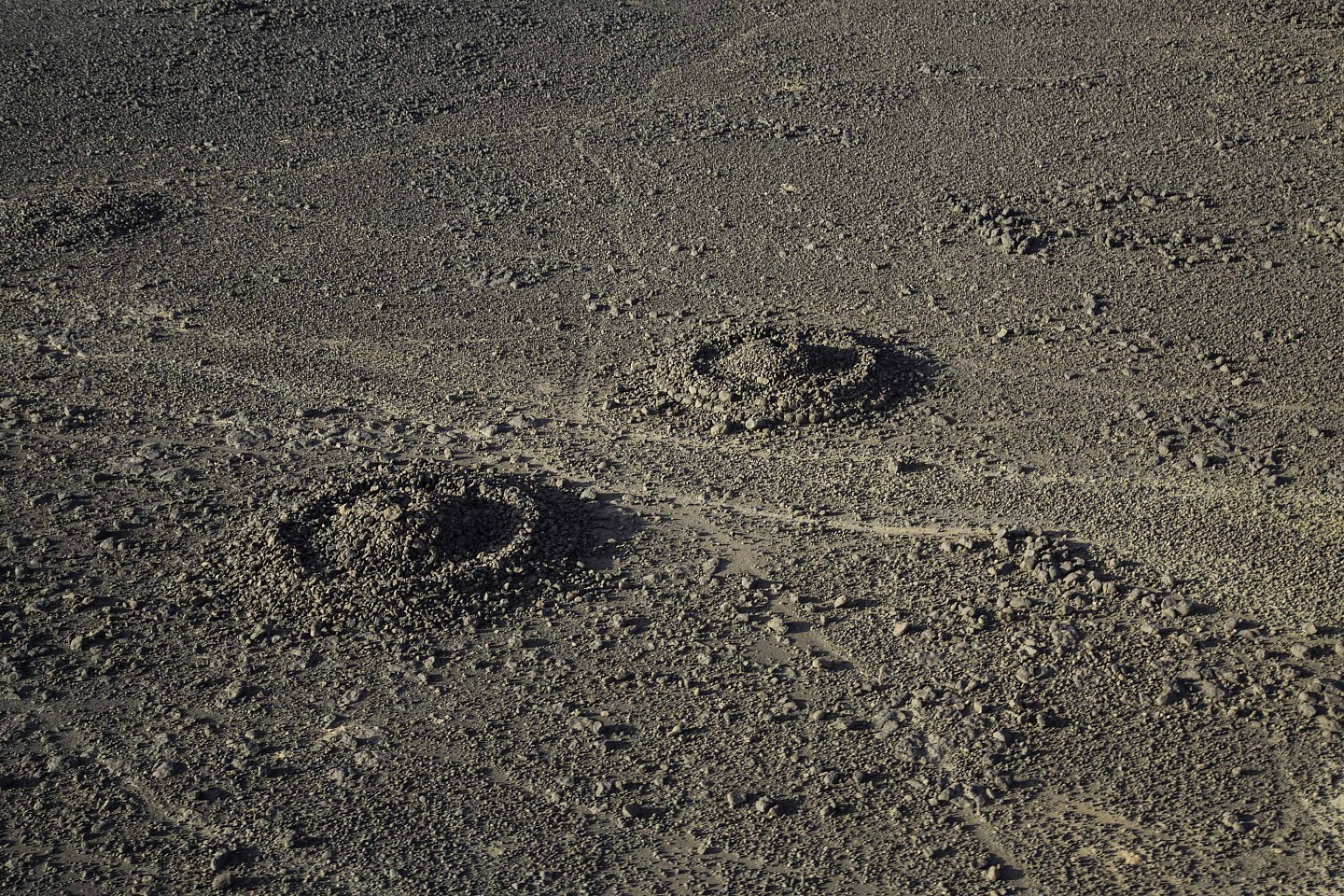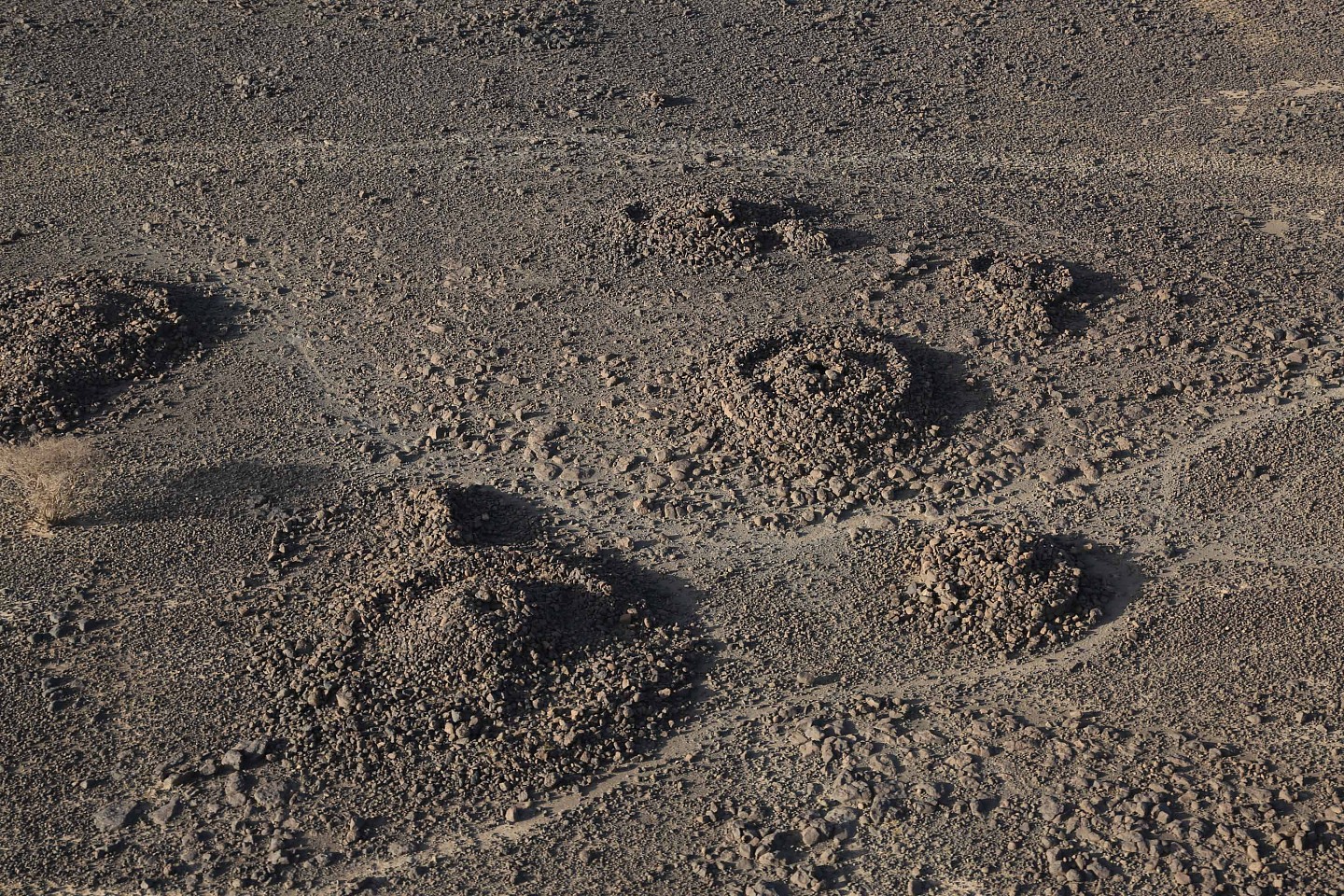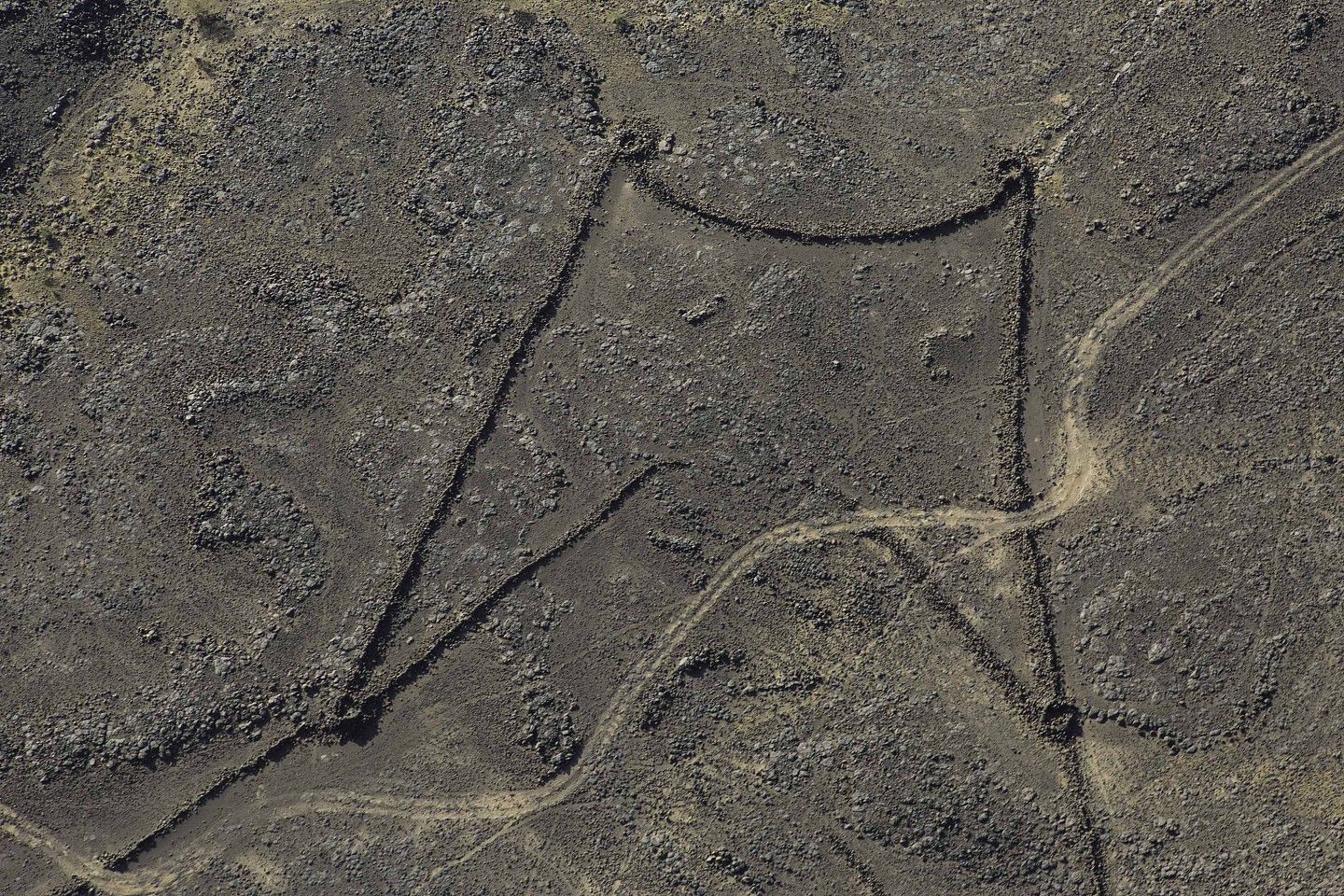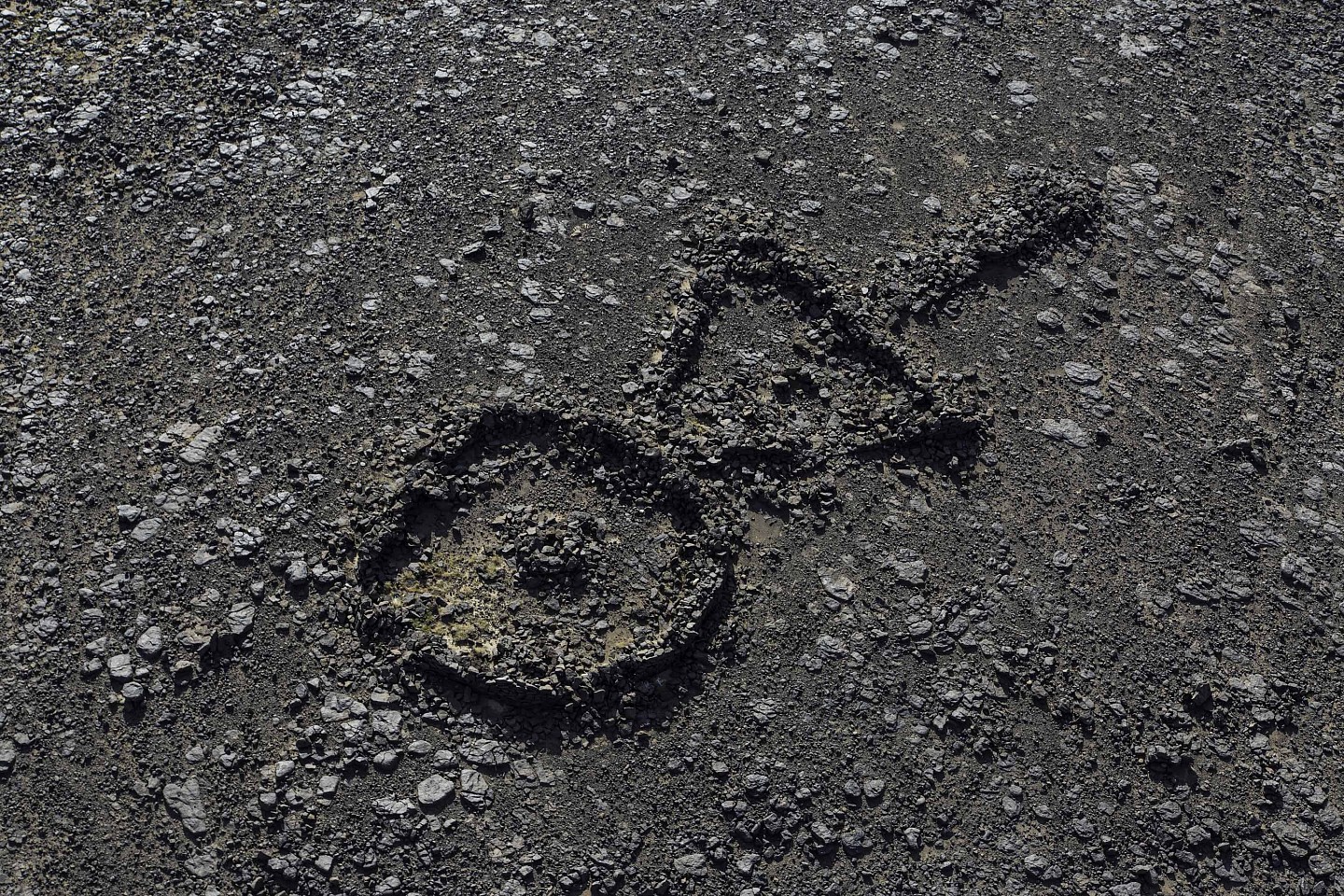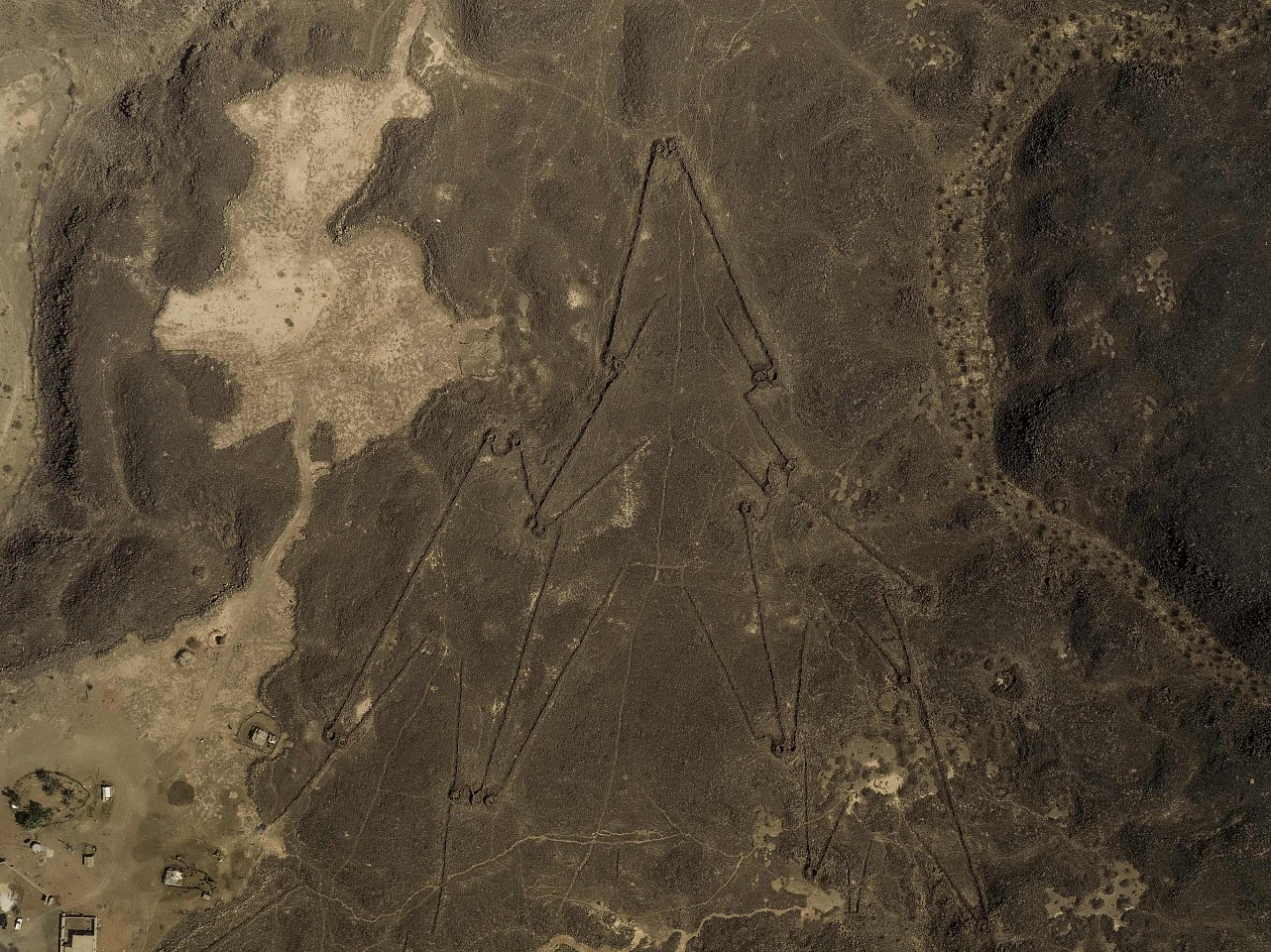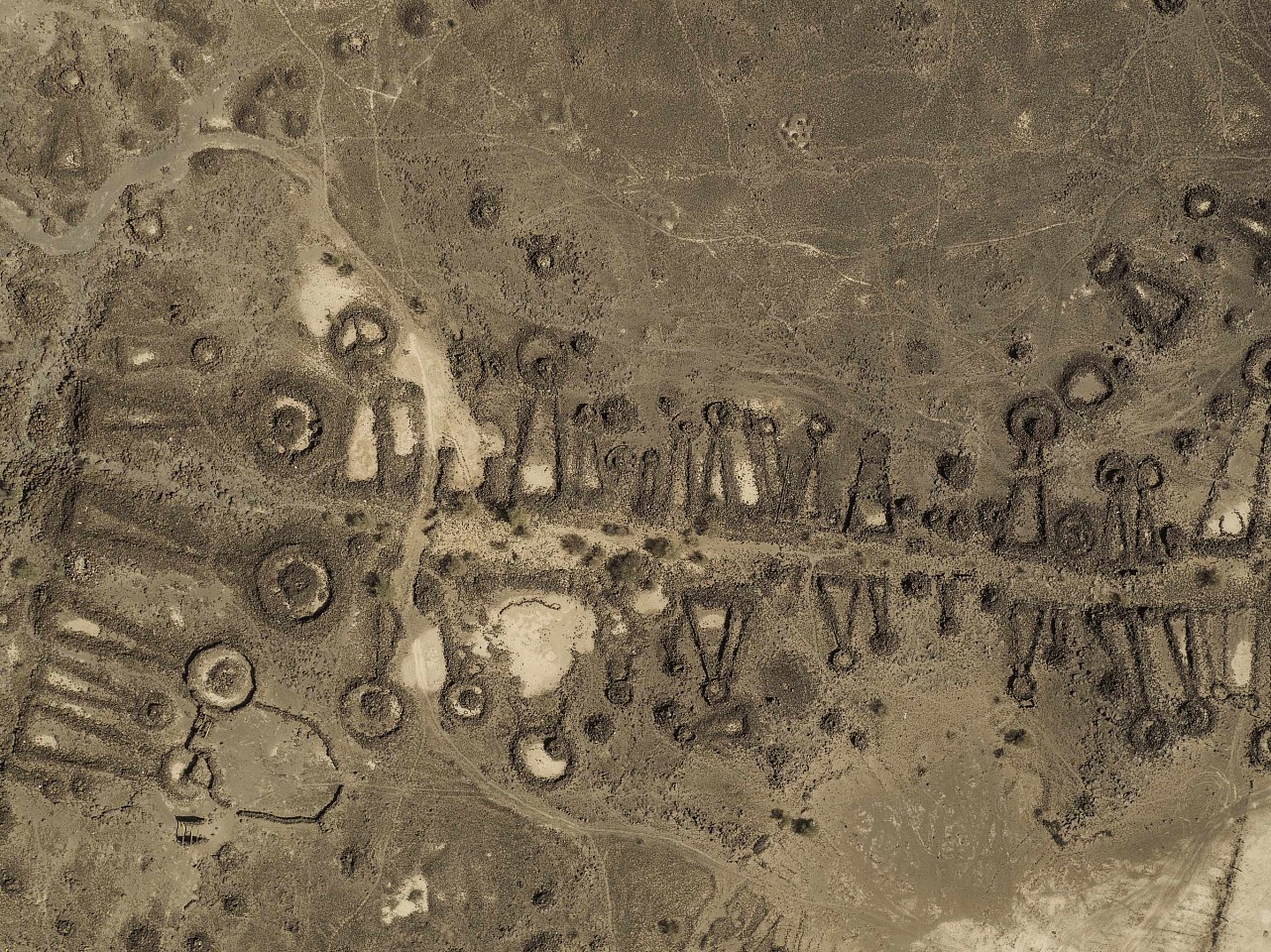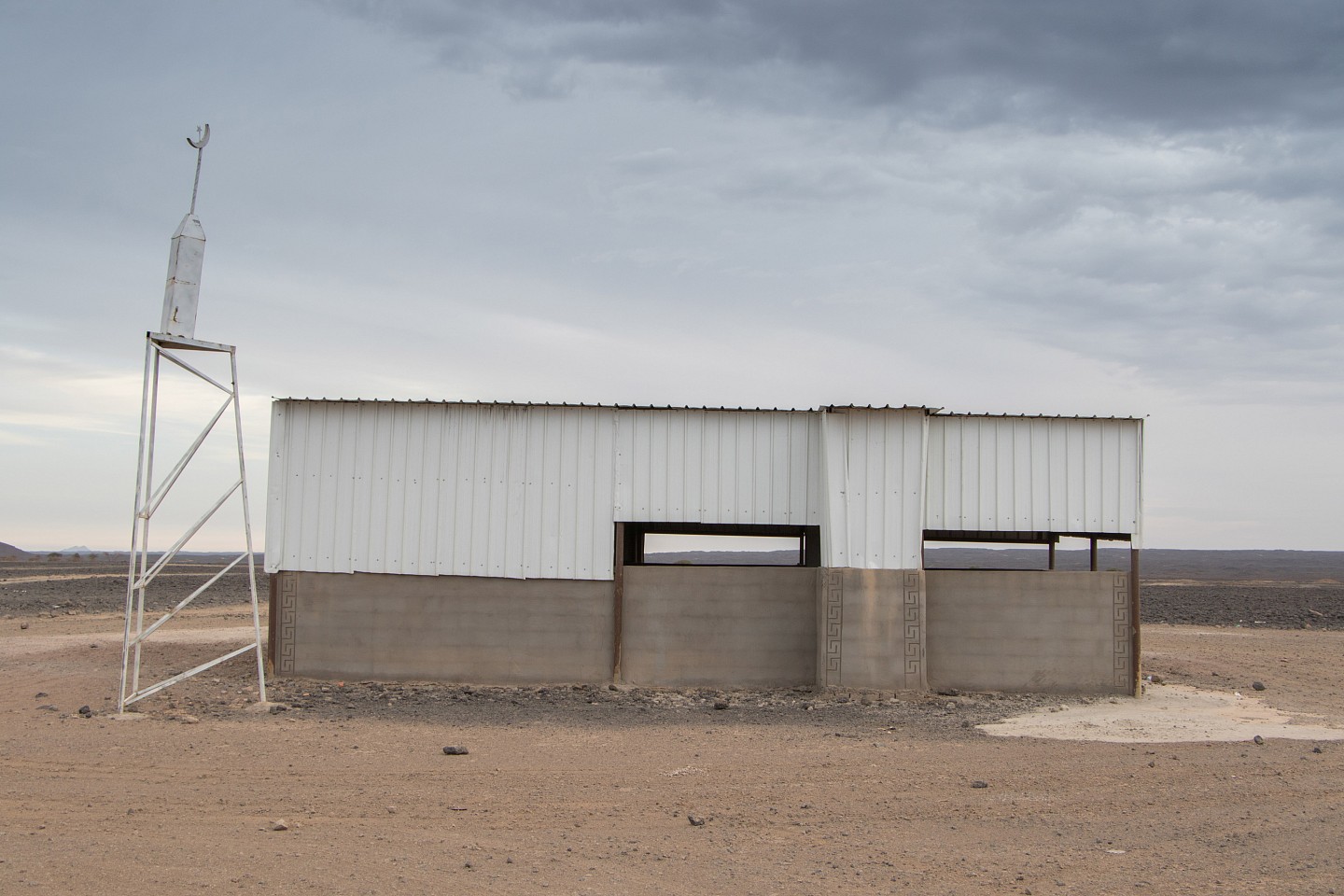Moath Alofi
Moath Alofi
Al-Ejaba
Steel
197 x 93 x 5 cm
From Doors of Barlik series
MAO0029
Moath Alofi
Al-Awali
Steel
190 x 90 x 9 cm
From Doors of Barlik series
MAO0028
Moath Alofi
Al-Masanie I
Steel
187 x 115 x 5 cm
From Doors of Barlik series
MAO0027
Moath Alofi
Bab Al-Kuma
Steel
192 x 143 x 5 cm
From Doors of Barlik series
MAO0025
Moath Alofi
Al-Amida
Wood, and metal parts
205 x 90 x 14 cm
From Doors of Barlik series
MAO0023
Moath Alofi
Al-Etin I From Doors of Barlik series, 2016
Steel
MAO0022
Moath Alofi
Demolishing Symbol 031383
Pigment Print Mounted on Dibond with 10 cm border
21 x 31.5 cm
Edition of 3, From Doors of Barlik series
MAO0002
Moath Alofi
Demolishing Symbol 017607
Pigment Print Mounted on Dibond with 10 cm border
21 x 31.5 cm
Edition of 3, From Doors of Barlik series
MAO0004
Moath Alofi
Demolishing Symbol 012685
Pigment Print Mounted on Dibond with 10 cm border
21 x 31.5 cm
Edition of 3, From Doors of Barlik series
MAO0005
Moath Alofi
Demolishing Symbol 021667
Pigment Print Mounted on Dibond with 10 cm border
21 x 31.5 cm
Edition of 3, From Doors of Barlik series
MAO0007
Moath Alofi
031085
Pigment Print Mounted on Dibond
80 x 120 cm
Edition of 3, From Doors of Barlik series
MAO0016
Moath Alofi
012692
Pigment Print Mounted on Dibond
80 x 120 cm
Edition of 3, From Doors of Barlik series
MAO0017
Moath Alofi
012678
Pigment Print Mounted on Dibond
80 x 120 cm
Edition of 3, From Doors of Barlik series
MAO0018
Moath Alofi
019883 From Doors of Barlik series, 2016
Pigment Print Mounted on Dibond
MAO0013
Moath Alofi
Gurban From Doors of Barlik series, 2016
Pigment Print Mounted on Dibond
MAO0014
Moath Alofi
019908 From Doors of Barlik series, 2016
Pigment Print Mounted on Dibond
MAO0015
Moath Alofi
The Last Tashahhud III, 2017
Acrylic / prints on lightbox
MAO0040
Moath Alofi
The Last Tashahhud X, 2017
Acrylic / prints on lightbox
MAO0054
Moath Alofi
The Last Tashahhud XII, 2017
Acrylic / prints on lightbox
MAO0058
Moath Alofi
The Last Tashahhud XIII, 2017
Acrylic / prints on lightbox
MAO0077
Moath Alofi
The Last Tashahhud XV, 2017
Acrylic / prints on lightbox
MAO0081
Moath Alofi
Shepherd I from The Shepherd series, 2016
Photographic print
MAO0060
Moath Alofi
Shepherd III from The Shepherd series, 2016
Photographic print
MAO0063
Moath Alofi
Shepherd IV from The Shepherd series, 2016
Photographic print
MAO0074
Moath Alofi
Shepherd X from The Shepherd series, 2016
Photographic print
MAO0069
Moath Alofi
Shepherd XII from The Shepherd series, 2016
Photographic print
MAO0071
Moath Alofi
Japheth from the People of Pangaea series, 2018
Hahnemuhle Photo Rag Baryta 315gsm
145 x 218 cm
MAO0084
Moath Alofi
Adah from the People of Pangaea series, 2018
Hahnemuhle Photo Rag Baryta 315gsm
218 x 145 cm
MAO0085
Moath Alofi
Mehujael from the People of Pangaea series, 2018
Hahnemuhle Photo Rag Baryta 315gsm
145 x 218 cm
MAO0086
Moath Alofi
Enoch from the People of Pangaea series, 2018
Hahnemuhle Photo Rag Baryta 315gsm
145 x 218 cm
MAO0087
Moath Alofi
Jabal and Jubal from the People of Pangaea series, 2018
Hahnemuhle Photo Rag Baryta 315gsm
73 x 109.5 cm
MAO0088
Moath Alofi
Lamech from the People of Pangaea series, 2018
Hahnemuhle Photo Rag Baryta 315gsm
109.5 x 73 cm
MAO0089
Moath Alofi
Naamah from the People of Pangaea series, 2018
Hahnemuhle Photo Rag Baryta 315gsm
MAO0090
Moath Alofi
Tubal-Cain from the People of Pangaea series, 2018
Hahnemuhle Photo Rag Baryta 315gsm
MAO0091
Moath Alofi
Tubal-Cain 02 from the People of Pangaea series, 2018
Hahnemühle Photo Rag Baryta 315gsm
MAO0114
Moath Alofi
Zillah from the People of Pangaea series, 2018
Hahnemuhle Photo Rag Baryta 315gsm
MAO0092
Moath Alofi
Nod from the People of Pangaea series, 2018
Hahnemuhle Photo Rag Baryta 315gsm
MAO0093
Moath Alofi
Methuselah from People of Pangea Series, 2018
Hahnemuhle Photo Rag Baryta 315gsm
MAO0110
Moath Alofi
Emzara from People of Pangea Series, 2018
Hahnemuhle Photo Rag Baryta 315gsm
MAO0112
Moath Alofi
The Last Tashahhud XIV, 2017
Acrylic / prints on lightbox
MAO0079








































12,000 housing units including mosques, schools, hotels, and governmental facilities, in addition to the acquired vast and undeveloped lands, which lead to the change in the mobility with this newly transformed spaces.
Doors document the physical aftermath of societal displacement, the doors act as an ID which represents the family’s residing in it.
This displacement affected the people in terms of the surprising nature of it, and forced under the shadow of transparency.
Moath started to document this 3 years ago.
The architecture, the use of the volcanic rocks, the building define the history of the area.
12,000 housing units including mosques, schools, hotels, and governmental facilities, in addition to the acquired vast and undeveloped lands, which lead to the change in the mobility with this newly transformed spaces.
Doors document the physical aftermath of societal displacement, the doors act as an ID which represents the family’s residing in it.
This displacement affected the people in terms of the surprising nature of it, and forced under the shadow of transparency.
Moath started to document this 3 years ago.
The architecture, the use of the volcanic rocks, the building define the history of the area.
12,000 housing units including mosques, schools, hotels, and governmental facilities, in addition to the acquired vast and undeveloped lands, which lead to the change in the mobility with this newly transformed spaces.
Doors document the physical aftermath of societal displacement, the doors act as an ID which represents the family’s residing in it.
This displacement affected the people in terms of the surprising nature of it, and forced under the shadow of transparency.
Moath started to document this 3 years ago.
The architecture, the use of the volcanic rocks, the building define the history of the area.
12,000 housing units including mosques, schools, hotels, and governmental facilities, in addition to the acquired vast and undeveloped lands, which lead to the change in the mobility with this newly transformed spaces.
Doors document the physical aftermath of societal displacement, the doors act as an ID which represents the family’s residing in it.
This displacement affected the people in terms of the surprising nature of it, and forced under the shadow of transparency.
Moath started to document this 3 years ago.
The architecture, the use of the volcanic rocks, the building define the history of the area.
12,000 housing units including mosques, schools, hotels, and governmental facilities, in addition to the acquired vast and undeveloped lands, which lead to the change in the mobility with this newly transformed spaces.
Doors document the physical aftermath of societal displacement, the doors act as an ID which represents the family’s residing in it.
This displacement affected the people in terms of the surprising nature of it, and forced under the shadow of transparency.
Moath started to document this 3 years ago.
The architecture, the use of the volcanic rocks, the building define the history of the area.
The depicted demolishing symbols mark the first phase of an impending destruction, these symbols are haunting, cancerous, apocalyptic.
Spread around the city, can be seen everywhere, yet it goes unnoticeable at first.
There’s a haunting feel about the numbers.
Some people fight against these numbers, by erasing, scratching and painting over these numbers.
The depicted demolishing symbols mark the first phase of an impending destruction, these symbols are haunting, cancerous, apocalyptic.
Spread around the city, can be seen everywhere, yet it goes unnoticeable at first.
There’s a haunting feel about the numbers.
Some people fight against these numbers, by erasing, scratching and painting over these numbers.
The depicted demolishing symbols mark the first phase of an impending destruction, these symbols are haunting, cancerous, apocalyptic.
Spread around the city, can be seen everywhere, yet it goes unnoticeable at first.
There’s a haunting feel about the numbers.
Some people fight against these numbers, by erasing, scratching and painting over these numbers.
The depicted demolishing symbols mark the first phase of an impending destruction, these symbols are haunting, cancerous, apocalyptic.
Spread around the city, can be seen everywhere, yet it goes unnoticeable at first.
There’s a haunting feel about the numbers.
Some people fight against these numbers, by erasing, scratching and painting over these numbers.
The depicted demolishing symbols mark the first phase of an impending destruction, these symbols are haunting, cancerous, apocalyptic.
Spread around the city, can be seen everywhere, yet it goes unnoticeable at first.
There’s a haunting feel about the numbers.
Some people fight against these numbers, by erasing, scratching and painting over these numbers.
A series of photographs taken from the air tread the line between reality and fiction. The scapes, be it landscapes, desertscapes, even moonscapes, offer a multiplicity of possibilities as to where their locality could be or where their origins stem from. Raising more questions than diffusing answers, these images present wonders in no uncertain terms.
The photographs of these anomalous formations, the oldest of which believed to be 9,000 years old, are aerial views shot over the vicinity of the holy city of Medina. The patterns created across the land are recognised as either gates, kites or keys, identified by pilots in the early 1920’s. They each occupy vast areas of land through a very ordered and distinct placement of the volcanic rock.
The artist’s selection of this body of work to reflect on the exhibition concept questions history on the value of its past in its relationship with the present. Being born and raised in Medina, the artist does not recall any mentioning of these mysterious structures; and yet, they have been known of since 1920s. Would the knowledge of their existence have changed his understanding of the present? Would it have impacted his interpretation of the past?
A series of photographs taken from the air tread the line between reality and fiction. The scapes, be it landscapes, desertscapes, even moonscapes, offer a multiplicity of possibilities as to where their locality could be or where their origins stem from. Raising more questions than diffusing answers, these images present wonders in no uncertain terms.
The photographs of these anomalous formations, the oldest of which believed to be 9,000 years old, are aerial views shot over the vicinity of the holy city of Medina. The patterns created across the land are recognised as either gates, kites or keys, identified by pilots in the early 1920’s. They each occupy vast areas of land through a very ordered and distinct placement of the volcanic rock.
The artist’s selection of this body of work to reflect on the exhibition concept questions history on the value of its past in its relationship with the present. Being born and raised in Medina, the artist does not recall any mentioning of these mysterious structures; and yet, they have been known of since 1920s. Would the knowledge of their existence have changed his understanding of the present? Would it have impacted his interpretation of the past?
A series of photographs taken from the air tread the line between reality and fiction. The scapes, be it landscapes, desertscapes, even moonscapes, offer a multiplicity of possibilities as to where their locality could be or where their origins stem from. Raising more questions than diffusing answers, these images present wonders in no uncertain terms.
The photographs of these anomalous formations, the oldest of which believed to be 9,000 years old, are aerial views shot over the vicinity of the holy city of Medina. The patterns created across the land are recognised as either gates, kites or keys, identified by pilots in the early 1920’s. They each occupy vast areas of land through a very ordered and distinct placement of the volcanic rock.
The artist’s selection of this body of work to reflect on the exhibition concept questions history on the value of its past in its relationship with the present. Being born and raised in Medina, the artist does not recall any mentioning of these mysterious structures; and yet, they have been known of since 1920s. Would the knowledge of their existence have changed his understanding of the present? Would it have impacted his interpretation of the past?
A series of photographs taken from the air tread the line between reality and fiction. The scapes, be it landscapes, desertscapes, even moonscapes, offer a multiplicity of possibilities as to where their locality could be or where their origins stem from. Raising more questions than diffusing answers, these images present wonders in no uncertain terms.
The photographs of these anomalous formations, the oldest of which believed to be 9,000 years old, are aerial views shot over the vicinity of the holy city of Medina. The patterns created across the land are recognised as either gates, kites or keys, identified by pilots in the early 1920’s. They each occupy vast areas of land through a very ordered and distinct placement of the volcanic rock.
The artist’s selection of this body of work to reflect on the exhibition concept questions history on the value of its past in its relationship with the present. Being born and raised in Medina, the artist does not recall any mentioning of these mysterious structures; and yet, they have been known of since 1920s. Would the knowledge of their existence have changed his understanding of the present? Would it have impacted his interpretation of the past?
A series of photographs taken from the air tread the line between reality and fiction. The scapes, be it landscapes, desertscapes, even moonscapes, offer a multiplicity of possibilities as to where their locality could be or where their origins stem from. Raising more questions than diffusing answers, these images present wonders in no uncertain terms.
The photographs of these anomalous formations, the oldest of which believed to be 9,000 years old, are aerial views shot over the vicinity of the holy city of Medina. The patterns created across the land are recognised as either gates, kites or keys, identified by pilots in the early 1920’s. They each occupy vast areas of land through a very ordered and distinct placement of the volcanic rock.
The artist’s selection of this body of work to reflect on the exhibition concept questions history on the value of its past in its relationship with the present. Being born and raised in Medina, the artist does not recall any mentioning of these mysterious structures; and yet, they have been known of since 1920s. Would the knowledge of their existence have changed his understanding of the present? Would it have impacted his interpretation of the past?
A series of photographs taken from the air tread the line between reality and fiction. The scapes, be it landscapes, desertscapes, even moonscapes, offer a multiplicity of possibilities as to where their locality could be or where their origins stem from. Raising more questions than diffusing answers, these images present wonders in no uncertain terms.
The photographs of these anomalous formations, the oldest of which believed to be 9,000 years old, are aerial views shot over the vicinity of the holy city of Medina. The patterns created across the land are recognised as either gates, kites or keys, identified by pilots in the early 1920’s. They each occupy vast areas of land through a very ordered and distinct placement of the volcanic rock.
The artist’s selection of this body of work to reflect on the exhibition concept questions history on the value of its past in its relationship with the present. Being born and raised in Medina, the artist does not recall any mentioning of these mysterious structures; and yet, they have been known of since 1920s. Would the knowledge of their existence have changed his understanding of the present? Would it have impacted his interpretation of the past?
A series of photographs taken from the air tread the line between reality and fiction. The scapes, be it landscapes, desertscapes, even moonscapes, offer a multiplicity of possibilities as to where their locality could be or where their origins stem from. Raising more questions than diffusing answers, these images present wonders in no uncertain terms.
The photographs of these anomalous formations, the oldest of which believed to be 9,000 years old, are aerial views shot over the vicinity of the holy city of Medina. The patterns created across the land are recognised as either gates, kites or keys, identified by pilots in the early 1920’s. They each occupy vast areas of land through a very ordered and distinct placement of the volcanic rock.
The artist’s selection of this body of work to reflect on the exhibition concept questions history on the value of its past in its relationship with the present. Being born and raised in Medina, the artist does not recall any mentioning of these mysterious structures; and yet, they have been known of since 1920s. Would the knowledge of their existence have changed his understanding of the present? Would it have impacted his interpretation of the past?
A series of photographs taken from the air tread the line between reality and fiction. The scapes, be it landscapes, desertscapes, even moonscapes, offer a multiplicity of possibilities as to where their locality could be or where their origins stem from. Raising more questions than diffusing answers, these images present wonders in no uncertain terms.
The photographs of these anomalous formations, the oldest of which believed to be 9,000 years old, are aerial views shot over the vicinity of the holy city of Medina. The patterns created across the land are recognised as either gates, kites or keys, identified by pilots in the early 1920’s. They each occupy vast areas of land through a very ordered and distinct placement of the volcanic rock.
The artist’s selection of this body of work to reflect on the exhibition concept questions history on the value of its past in its relationship with the present. Being born and raised in Medina, the artist does not recall any mentioning of these mysterious structures; and yet, they have been known of since 1920s. Would the knowledge of their existence have changed his understanding of the present? Would it have impacted his interpretation of the past?
A series of photographs taken from the air tread the line between reality and fiction. The scapes, be it landscapes, desertscapes, even moonscapes, offer a multiplicity of possibilities as to where their locality could be or where their origins stem from. Raising more questions than diffusing answers, these images present wonders in no uncertain terms.
The photographs of these anomalous formations, the oldest of which believed to be 9,000 years old, are aerial views shot over the vicinity of the holy city of Medina. The patterns created across the land are recognised as either gates, kites or keys, identified by pilots in the early 1920’s. They each occupy vast areas of land through a very ordered and distinct placement of the volcanic rock.
The artist’s selection of this body of work to reflect on the exhibition concept questions history on the value of its past in its relationship with the present. Being born and raised in Medina, the artist does not recall any mentioning of these mysterious structures; and yet, they have been known of since 1920s. Would the knowledge of their existence have changed his understanding of the present? Would it have impacted his interpretation of the past?
A series of photographs taken from the air tread the line between reality and fiction. The scapes, be it landscapes, desertscapes, even moonscapes, offer a multiplicity of possibilities as to where their locality could be or where their origins stem from. Raising more questions than diffusing answers, these images present wonders in no uncertain terms.
The photographs of these anomalous formations, the oldest of which believed to be 9,000 years old, are aerial views shot over the vicinity of the holy city of Medina. The patterns created across the land are recognised as either gates, kites or keys, identified by pilots in the early 1920’s. They each occupy vast areas of land through a very ordered and distinct placement of the volcanic rock.
The artist’s selection of this body of work to reflect on the exhibition concept questions history on the value of its past in its relationship with the present. Being born and raised in Medina, the artist does not recall any mentioning of these mysterious structures; and yet, they have been known of since 1920s. Would the knowledge of their existence have changed his understanding of the present? Would it have impacted his interpretation of the past?

